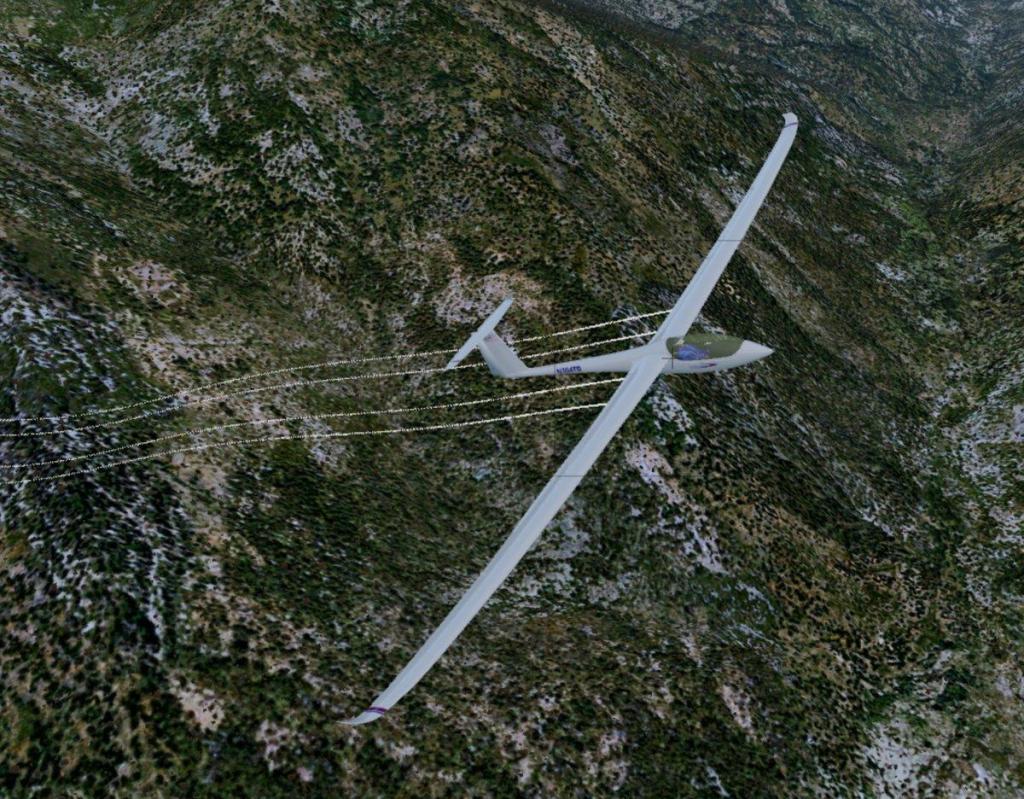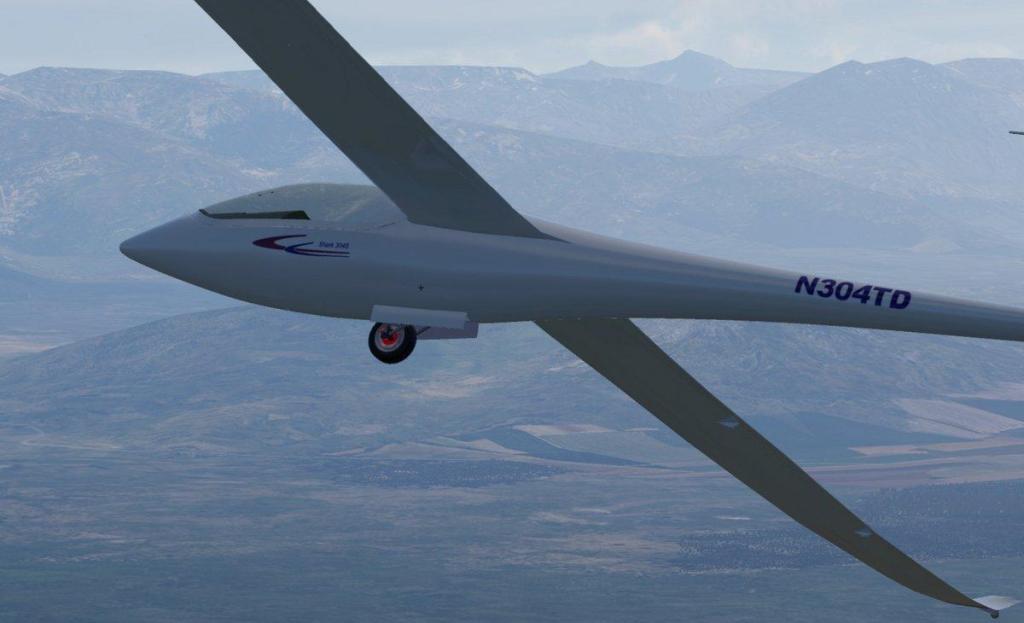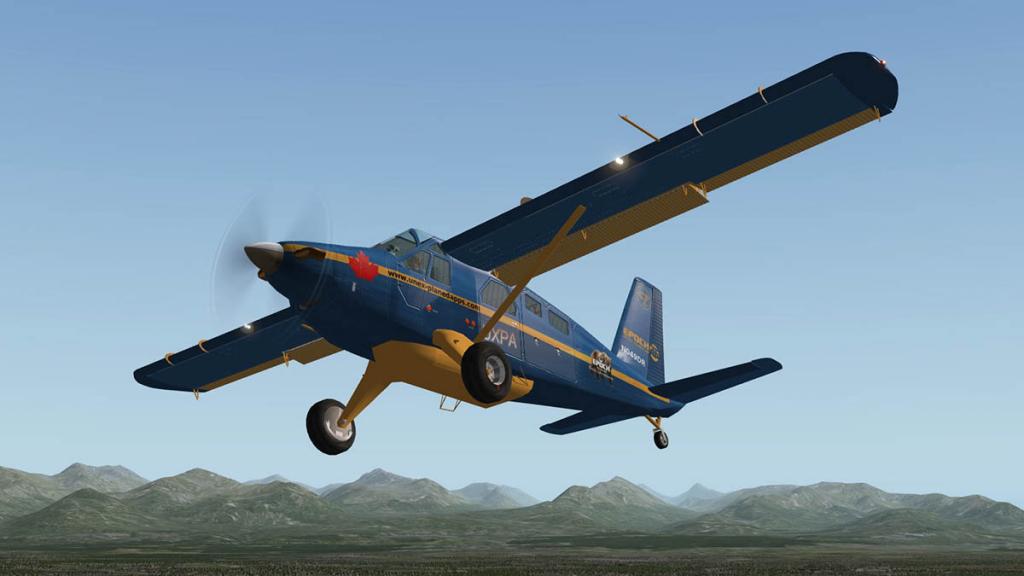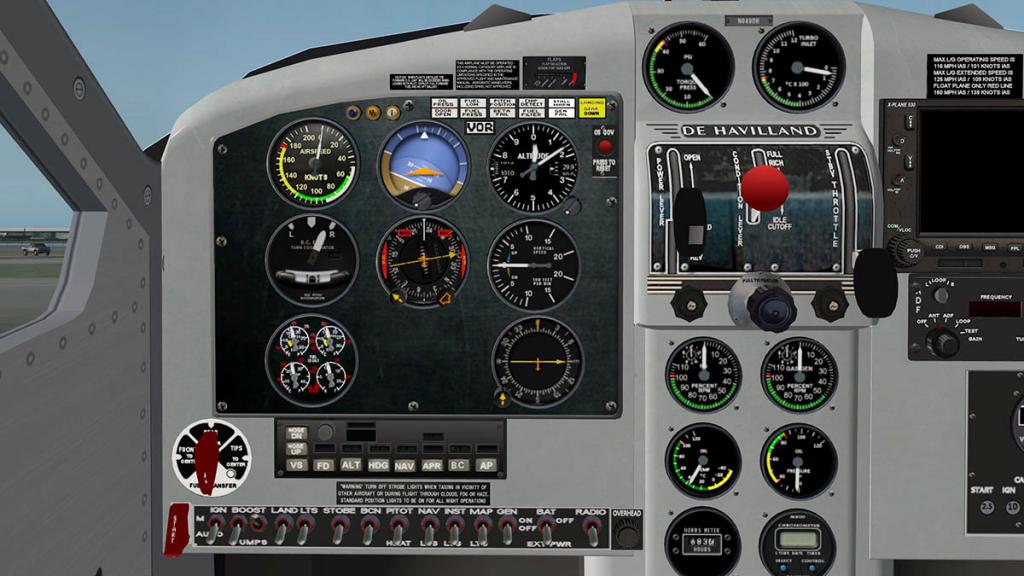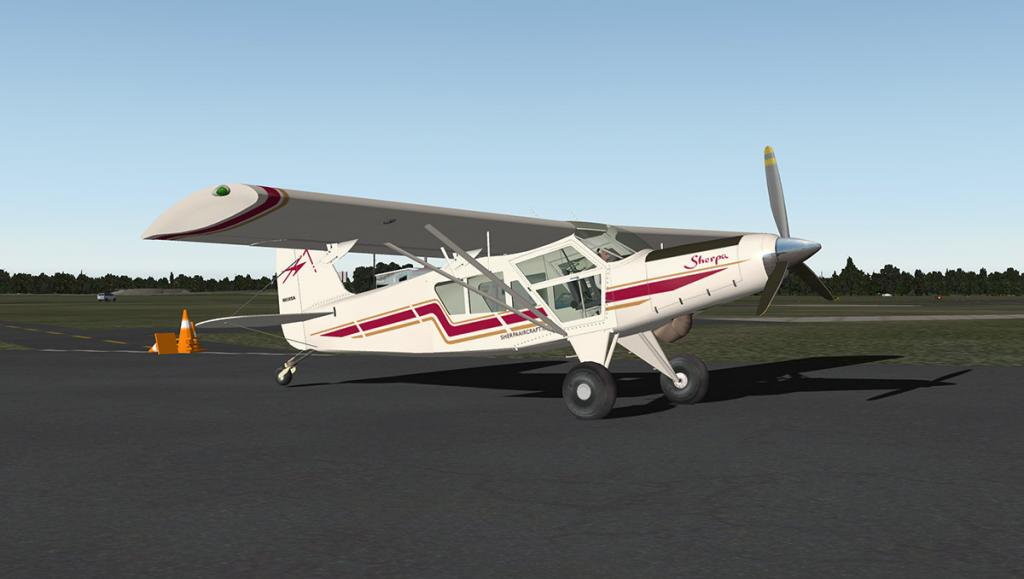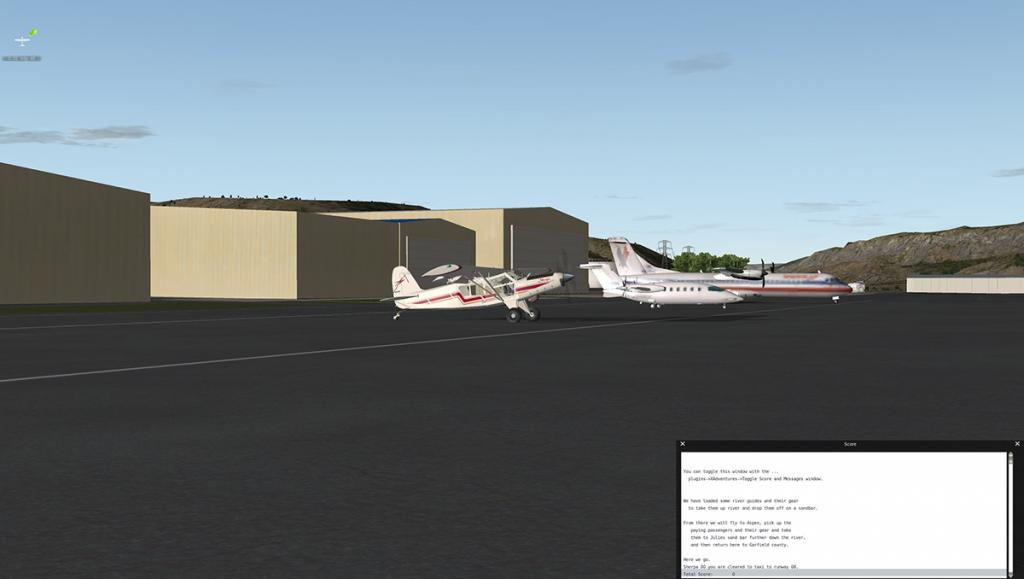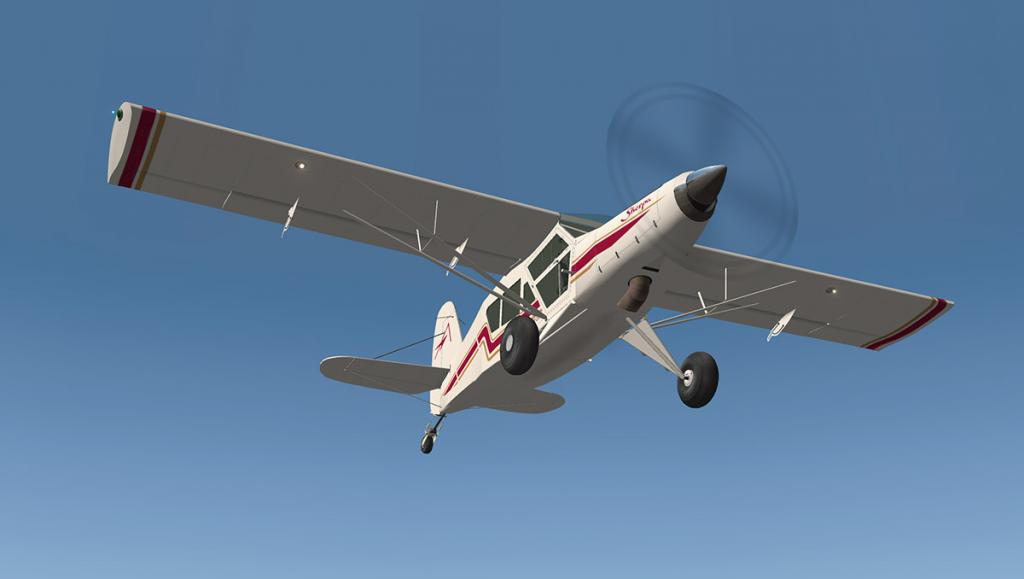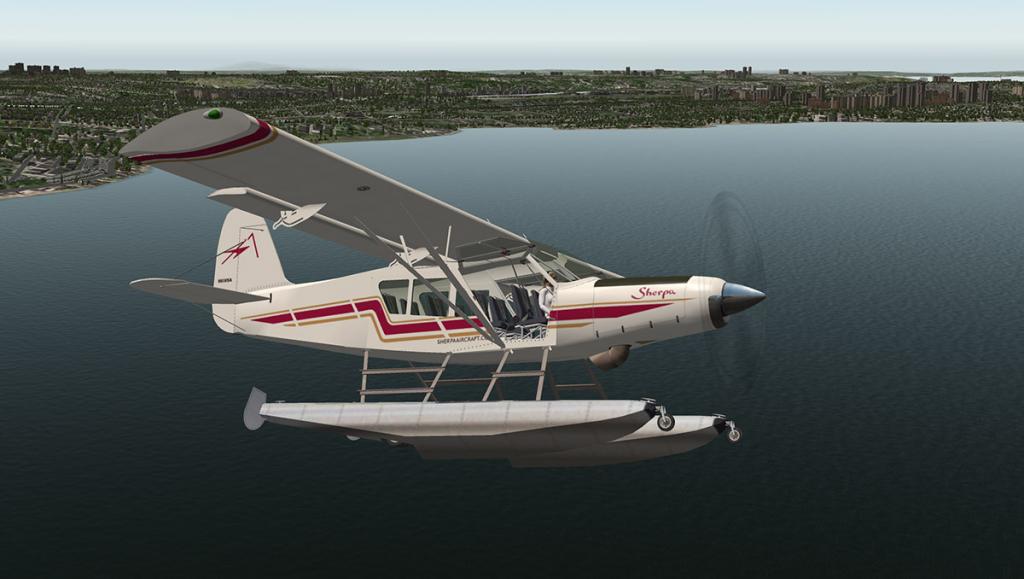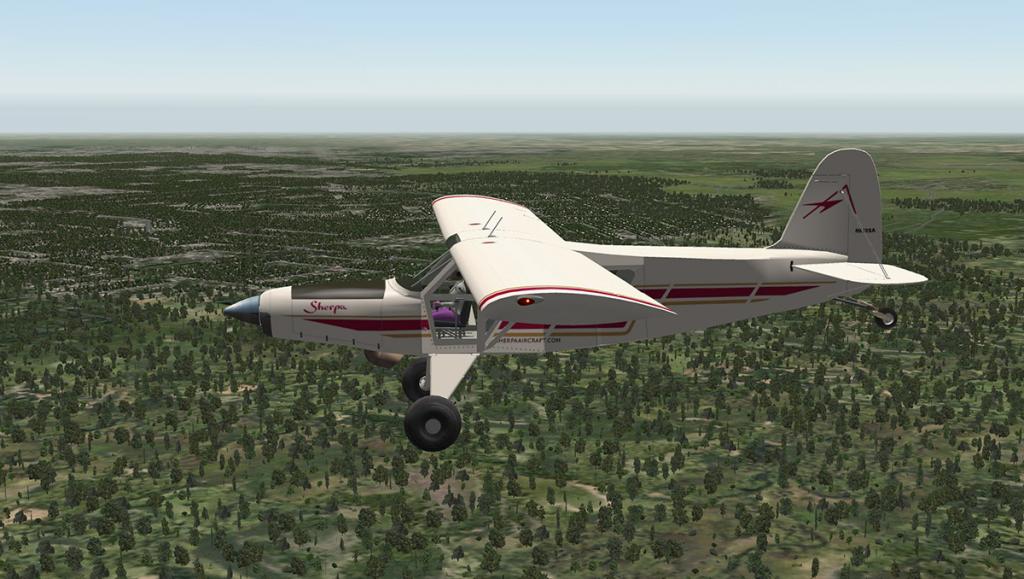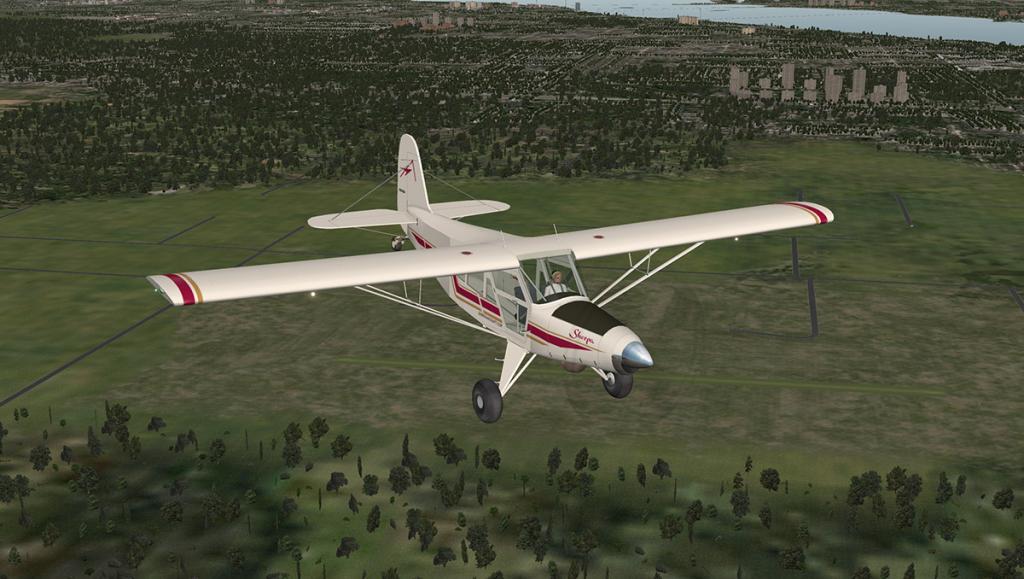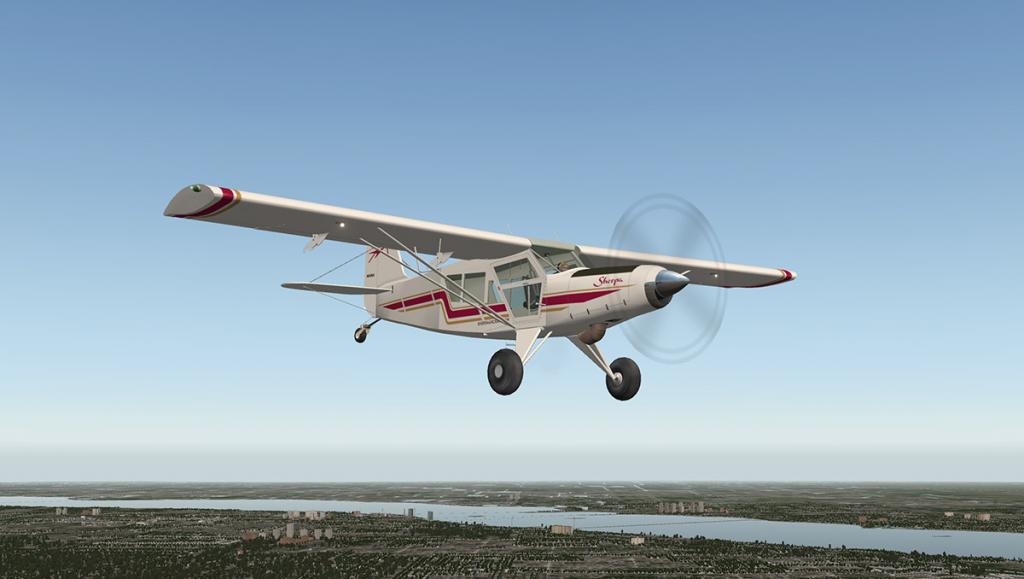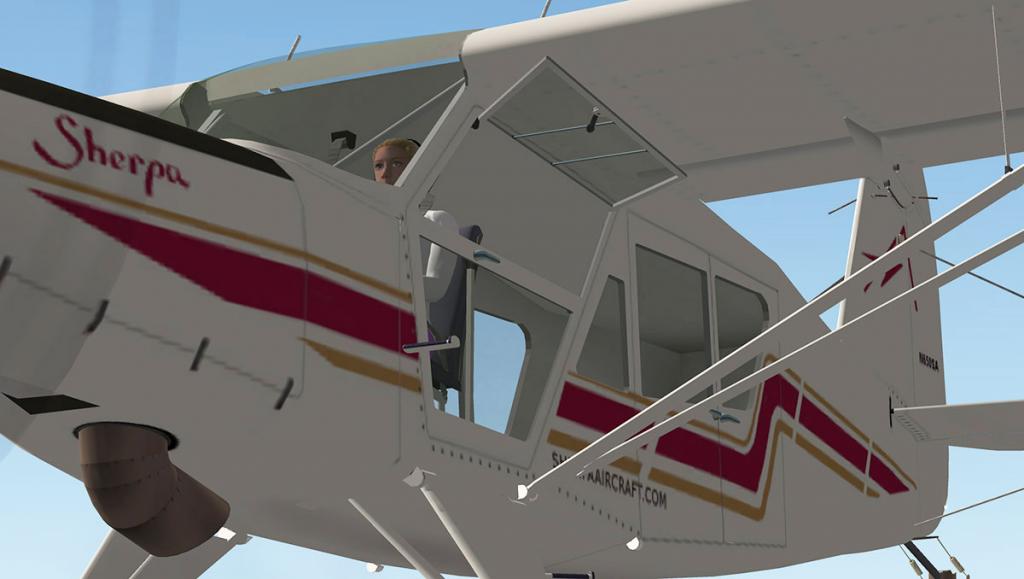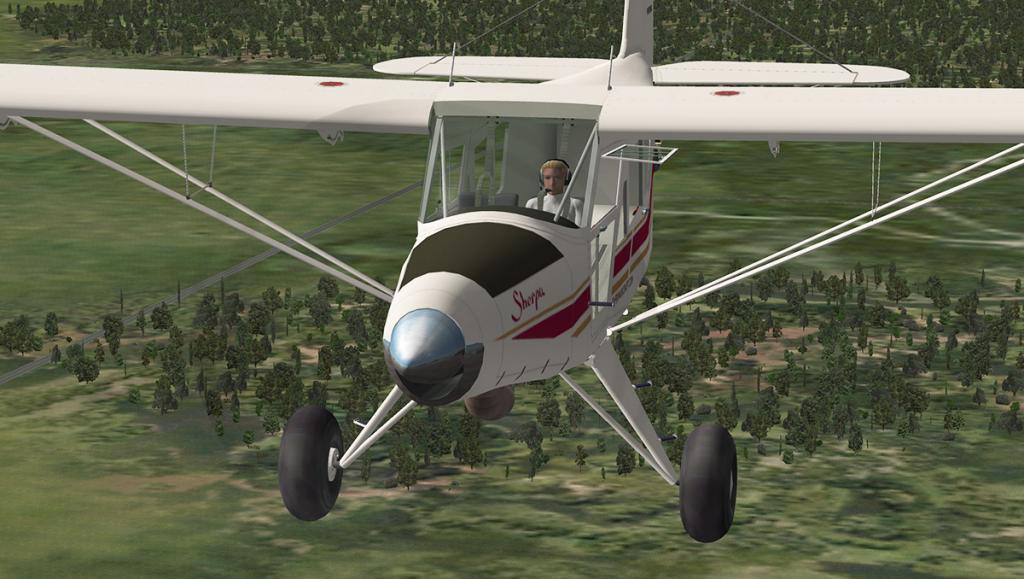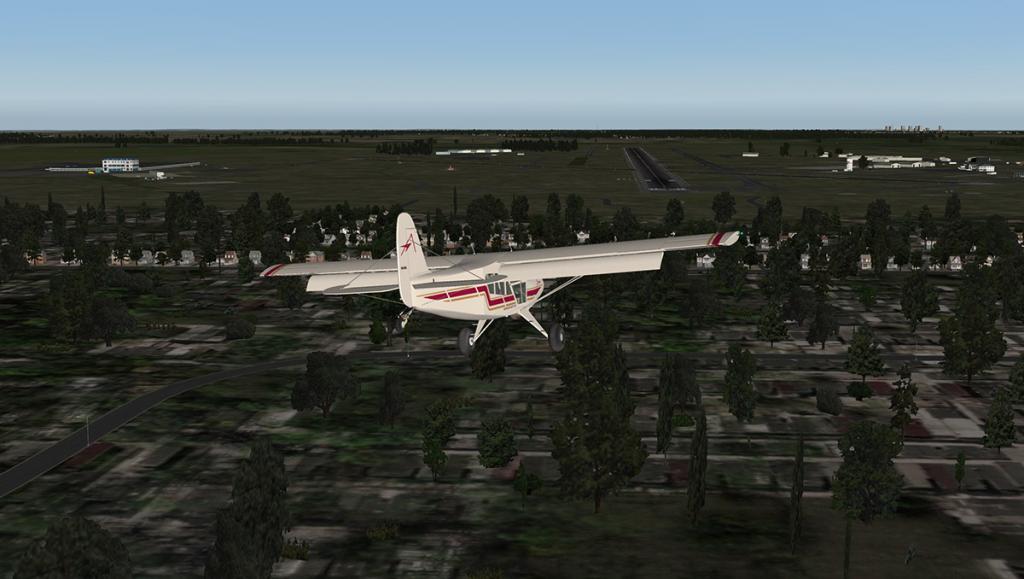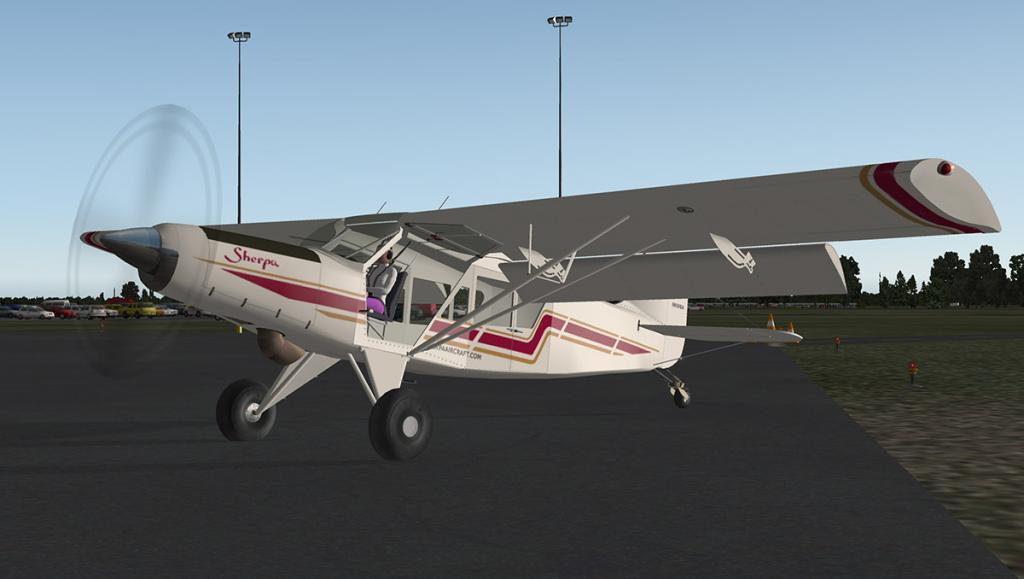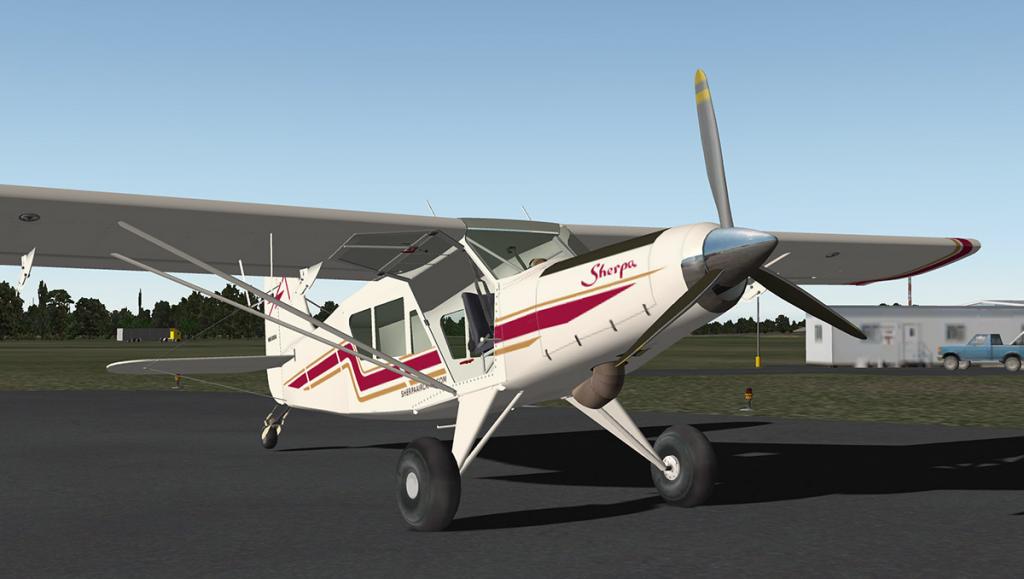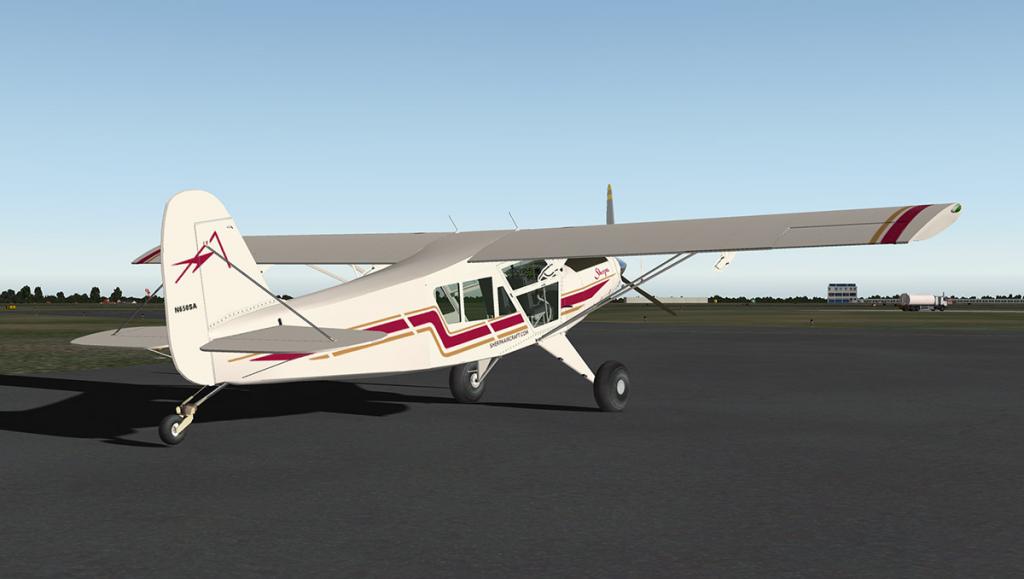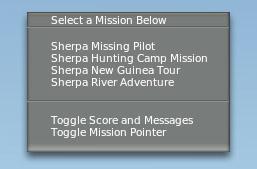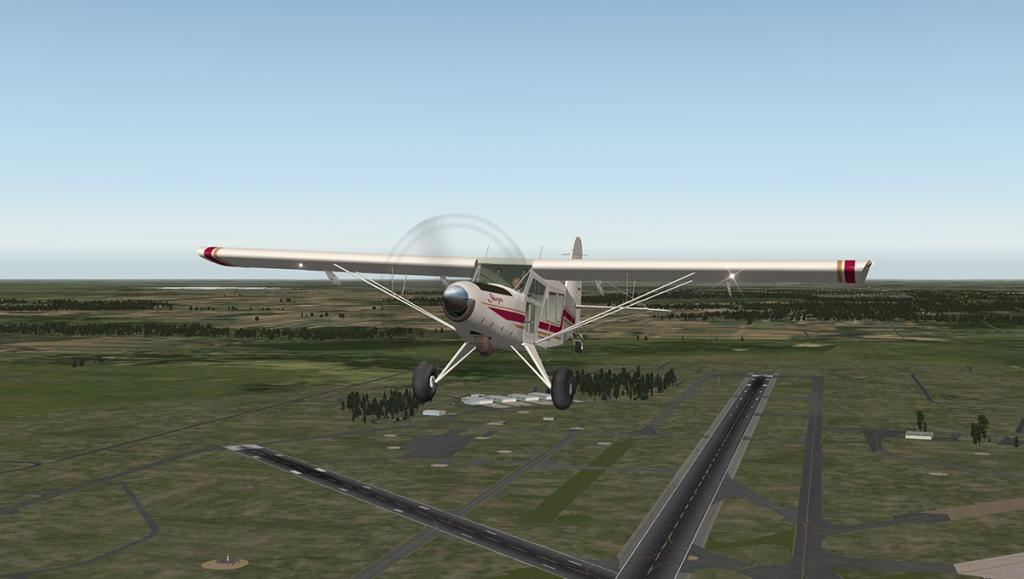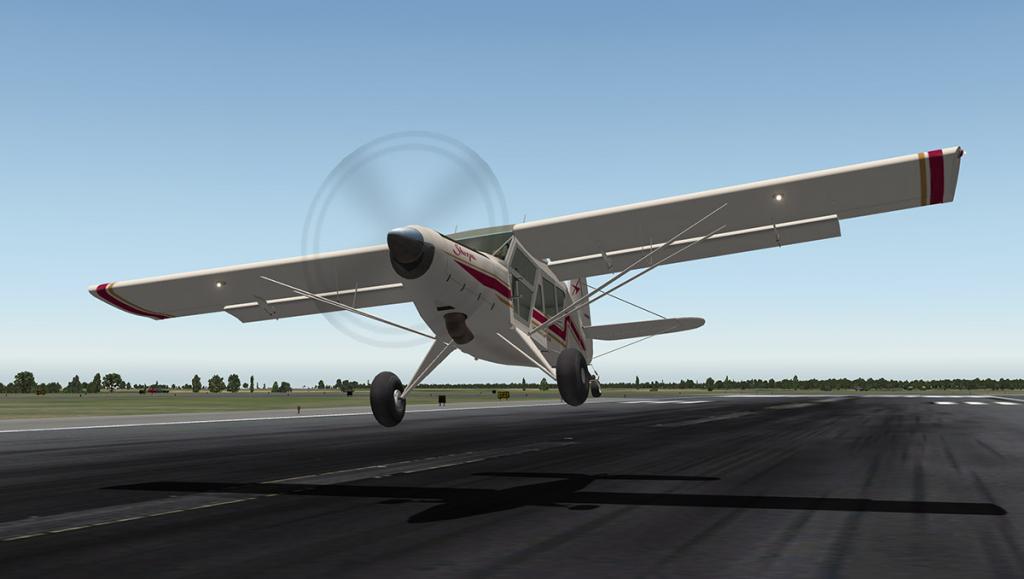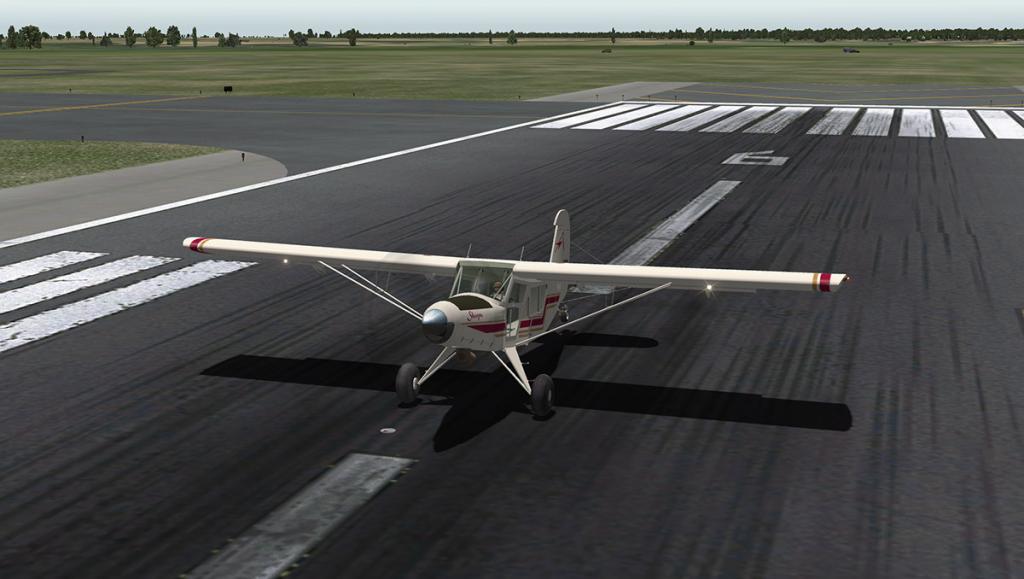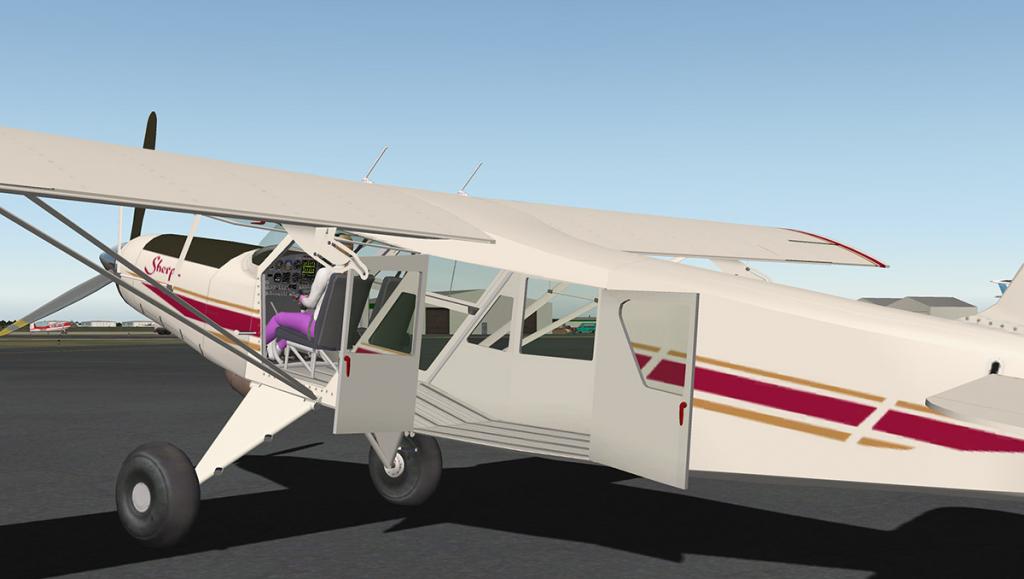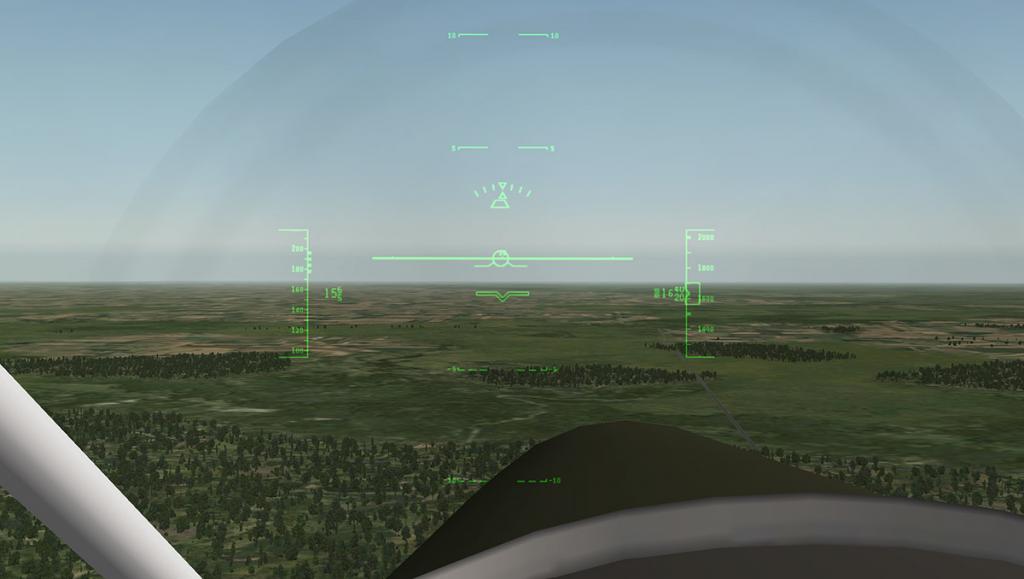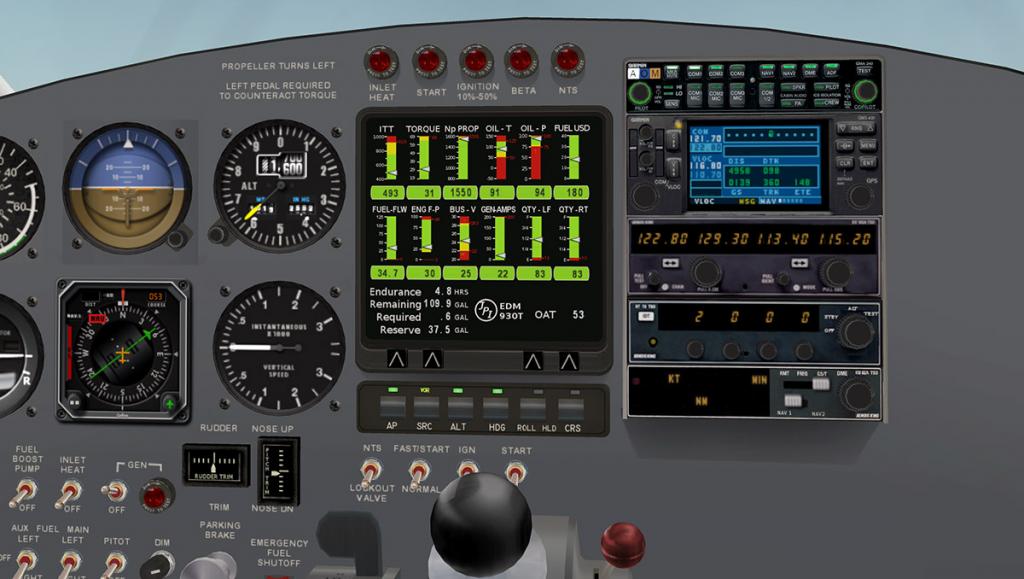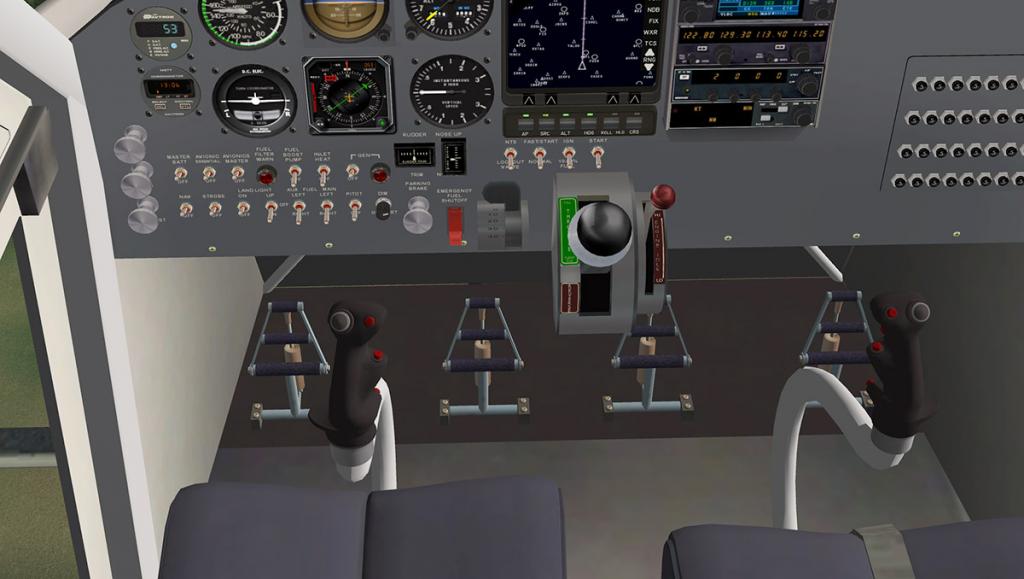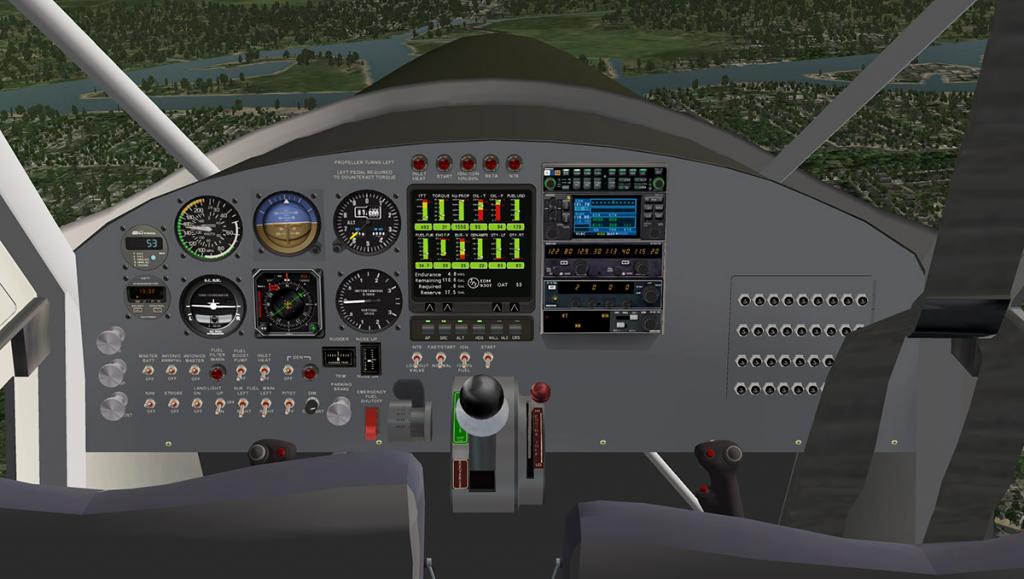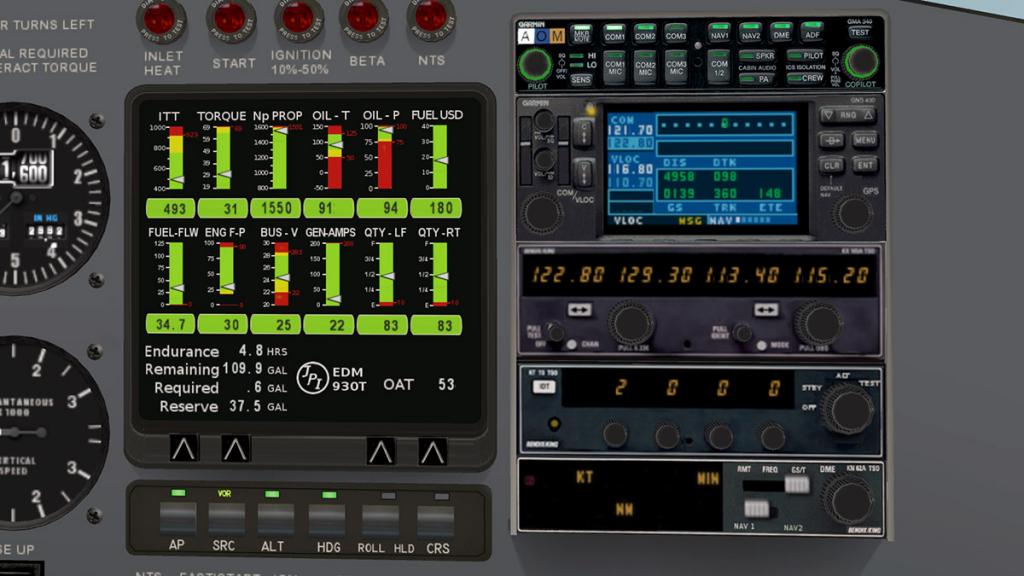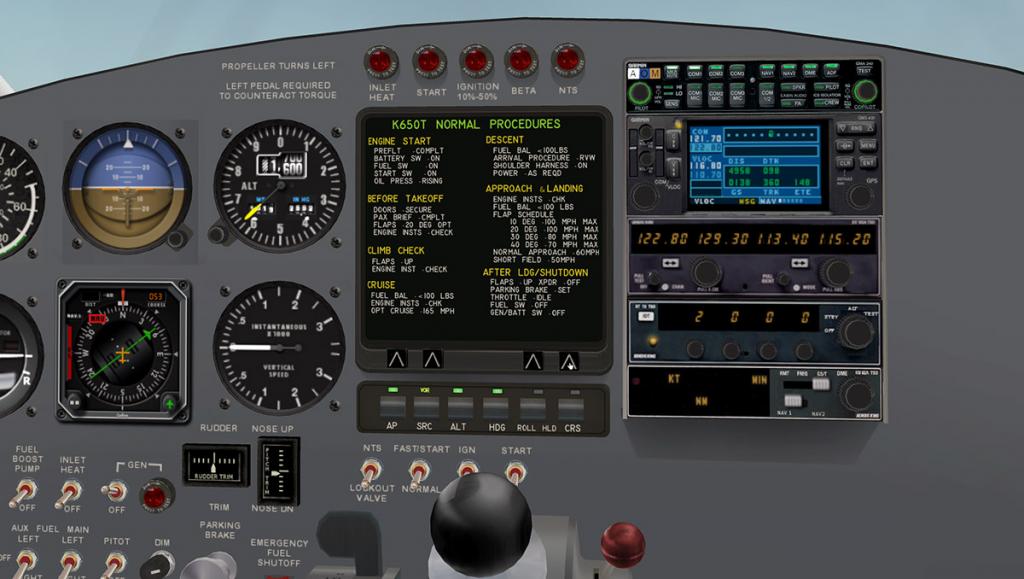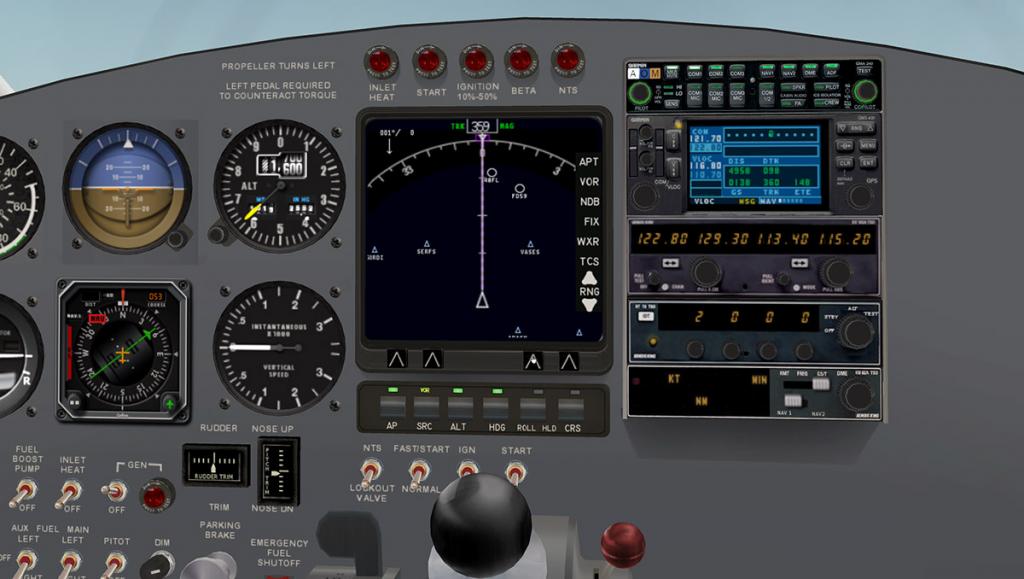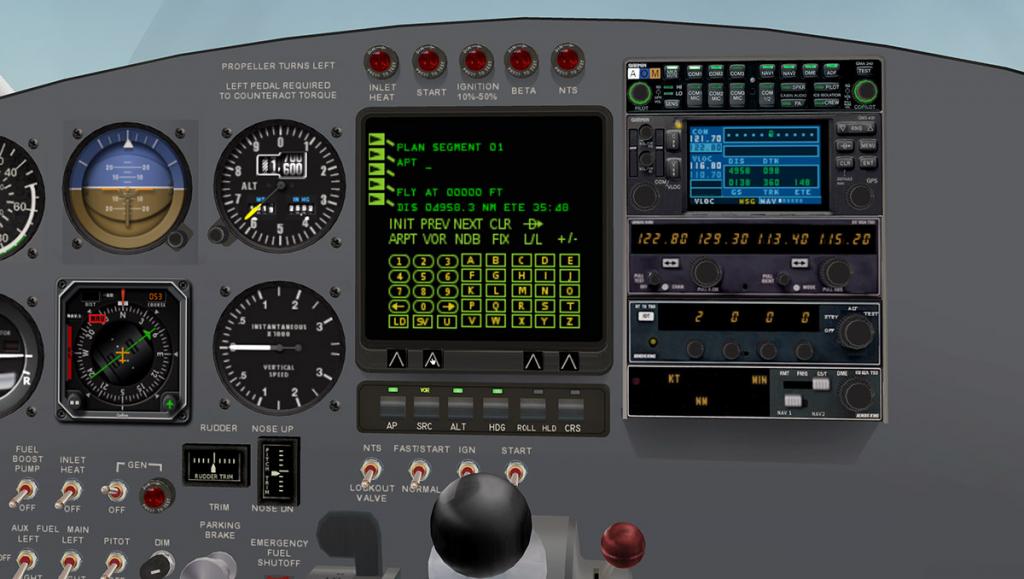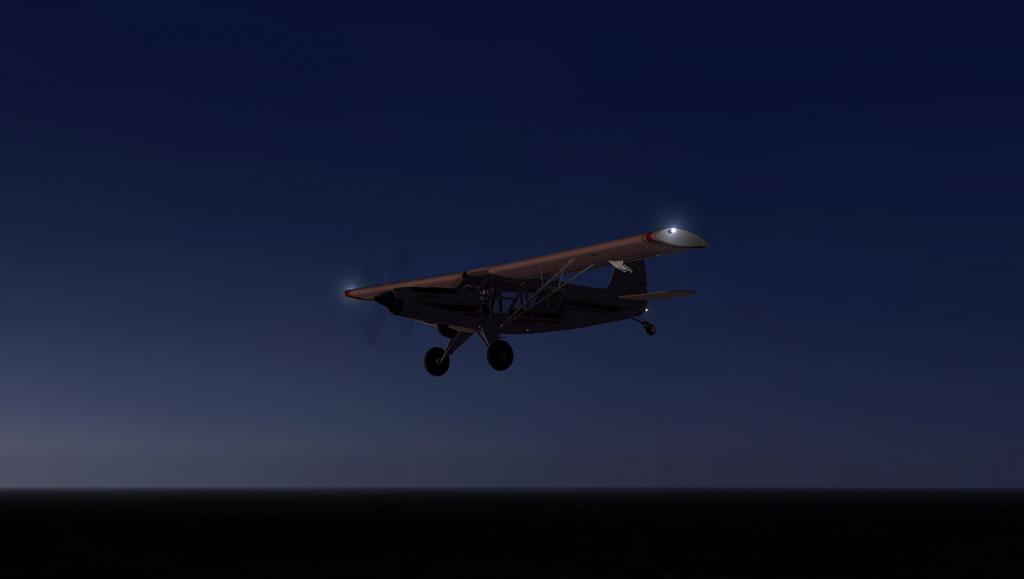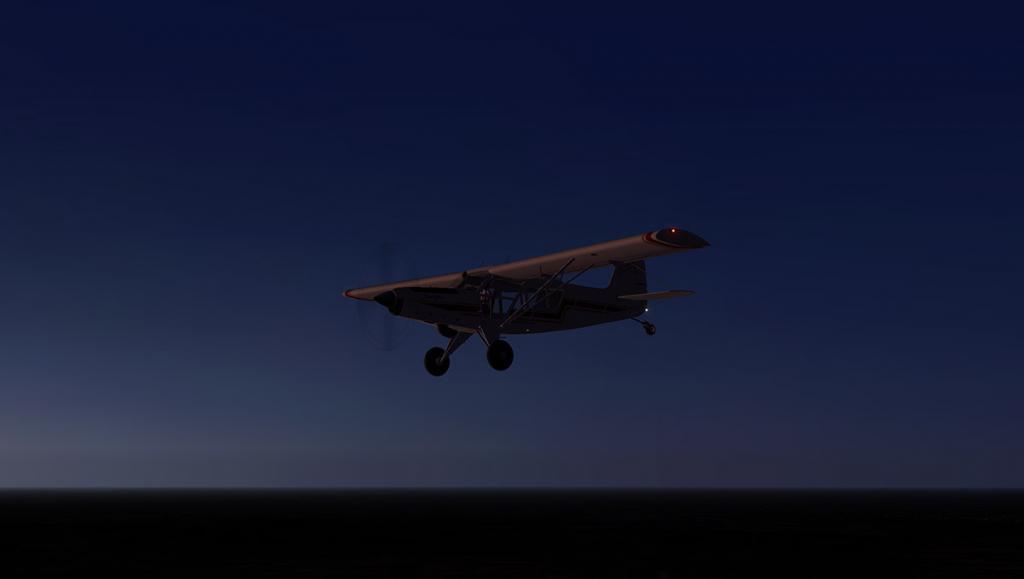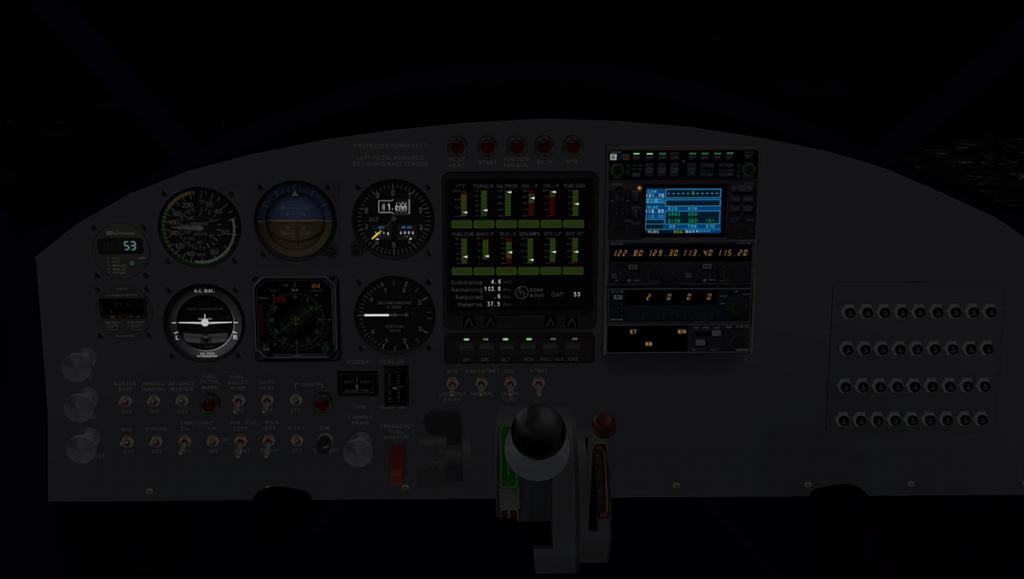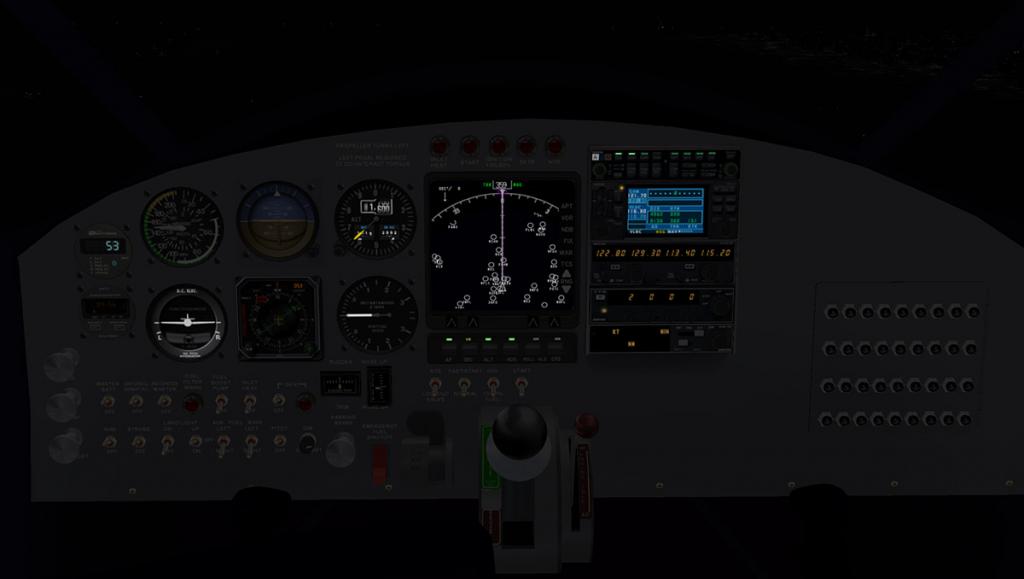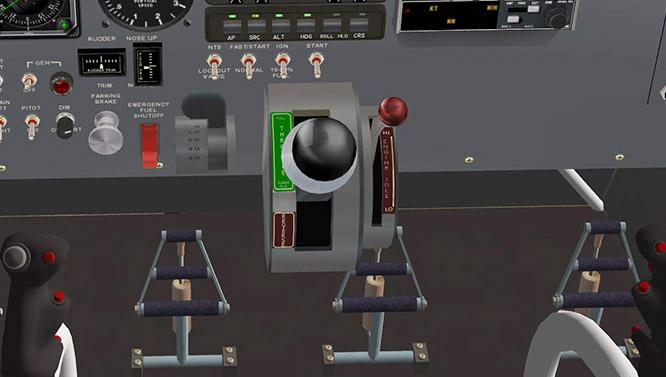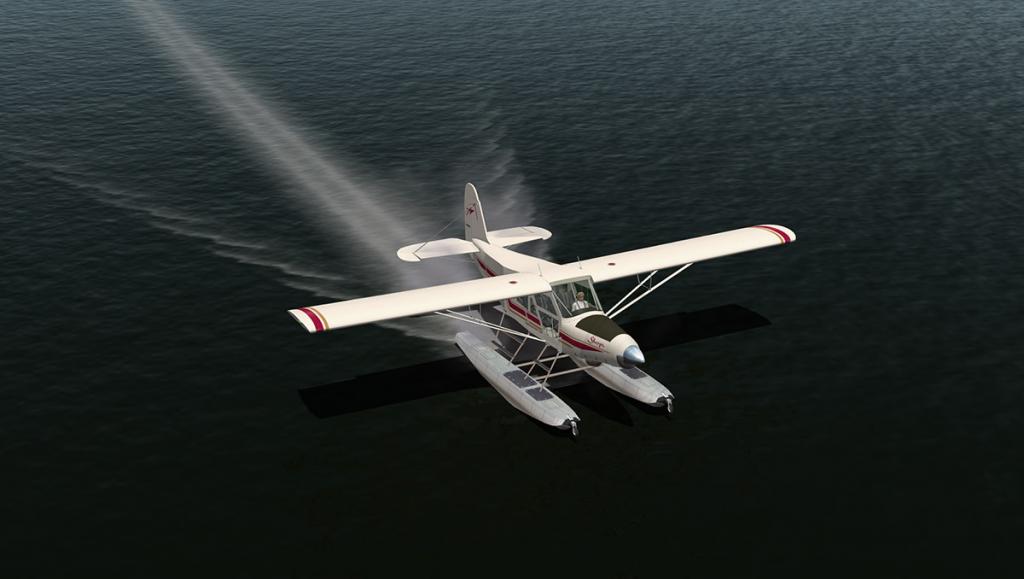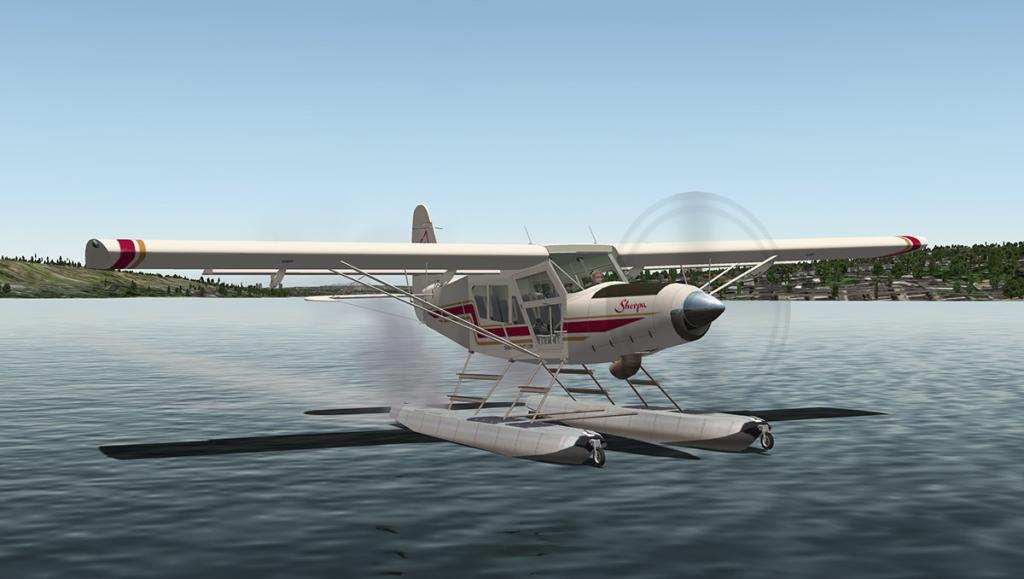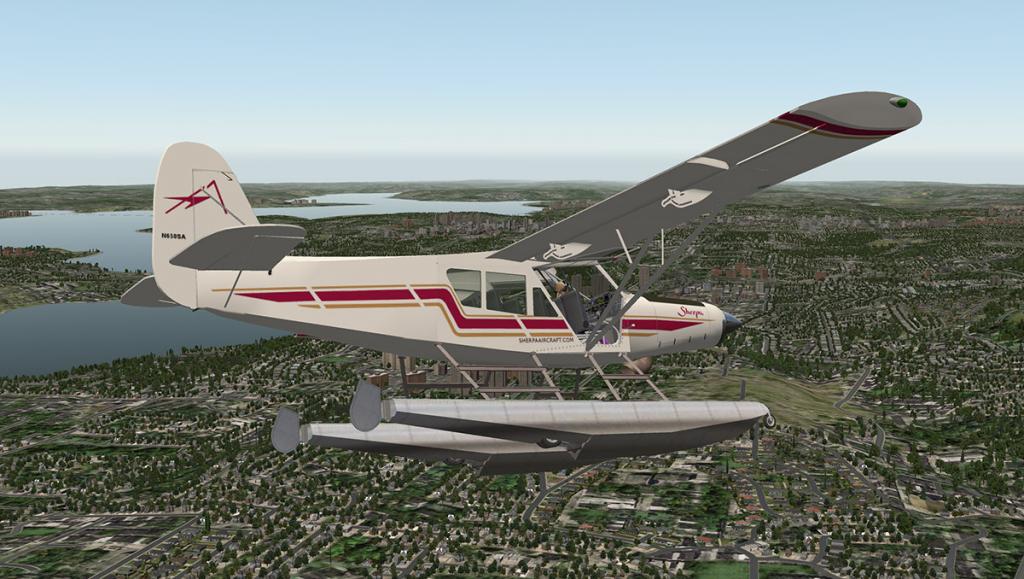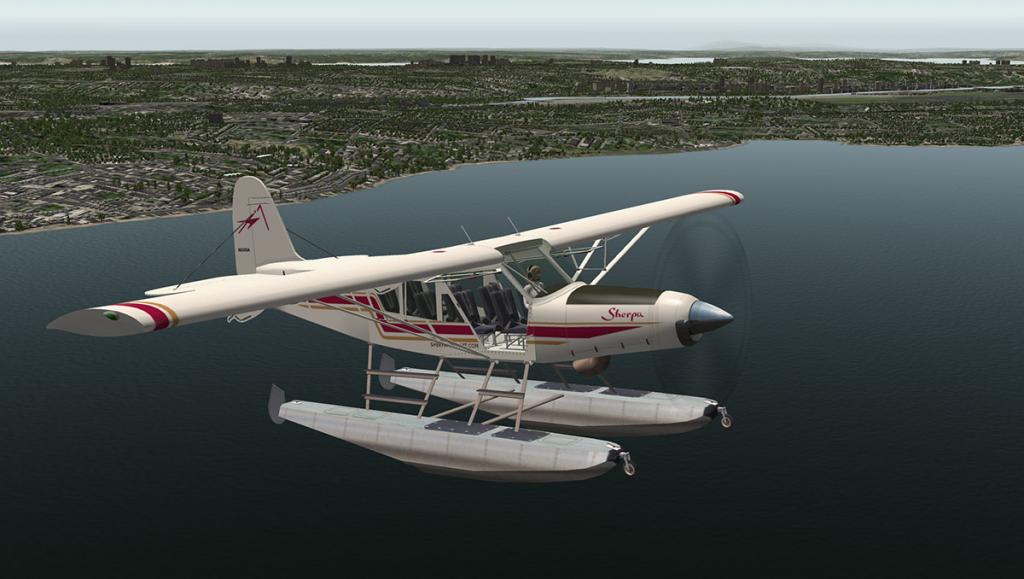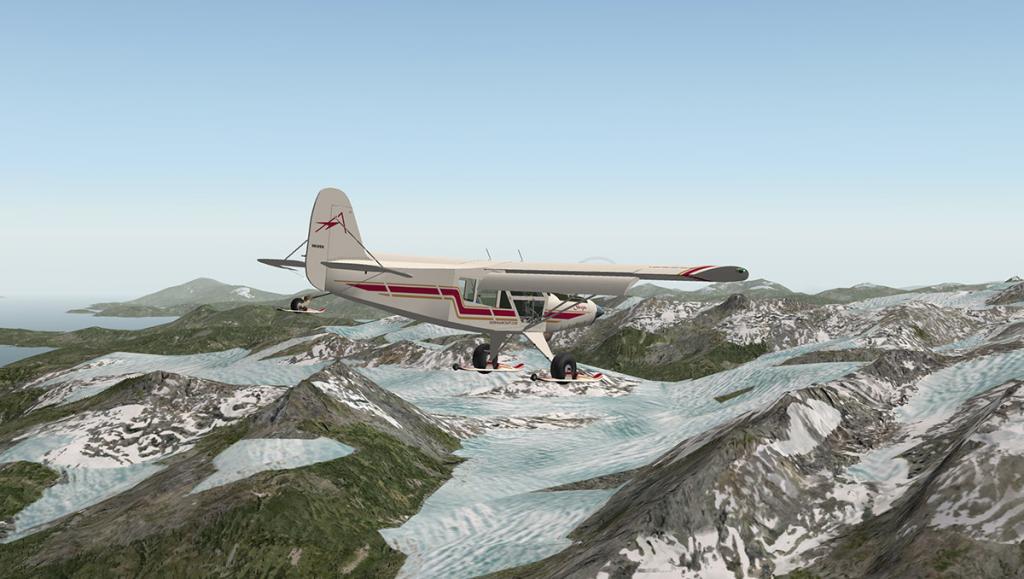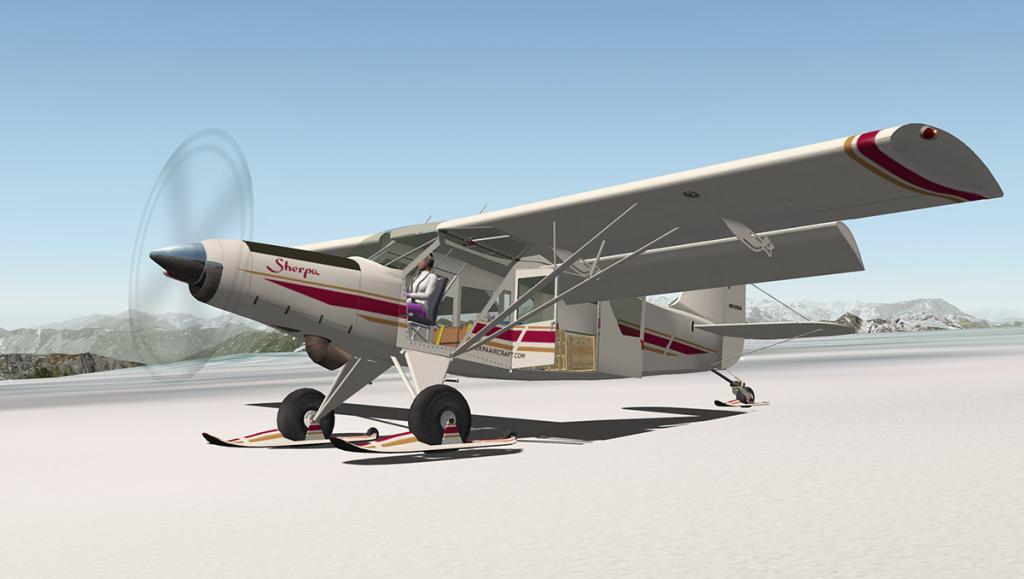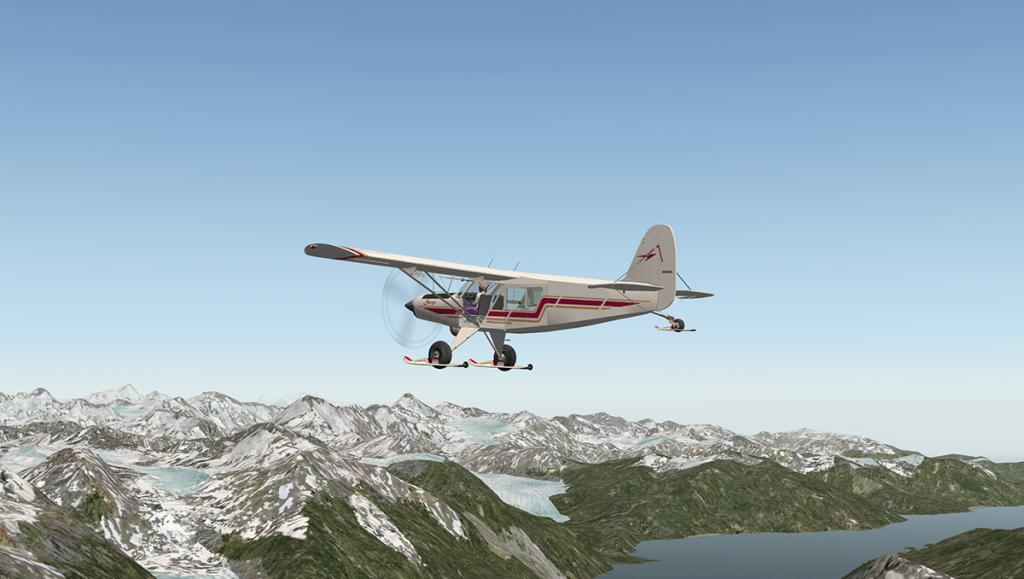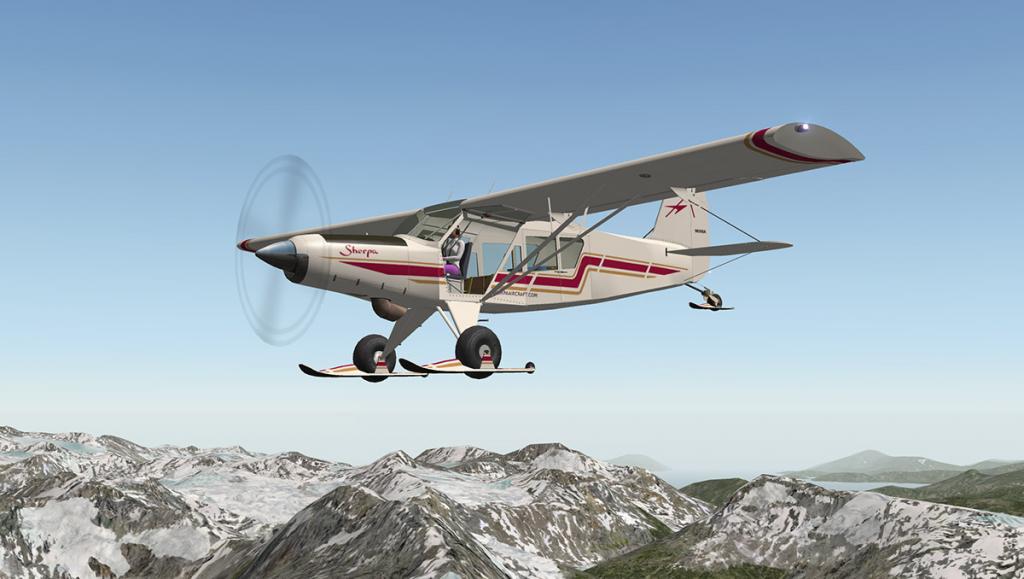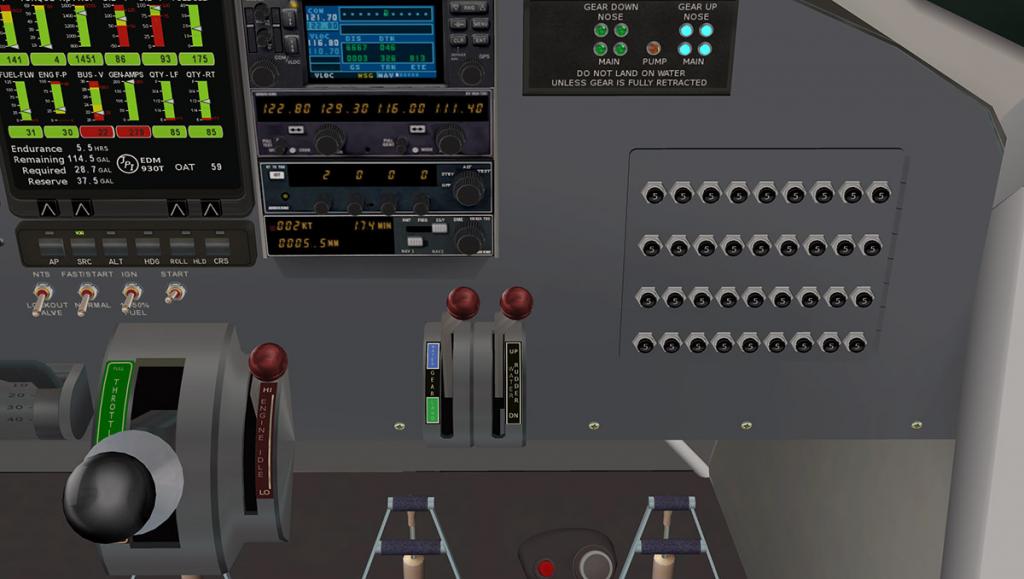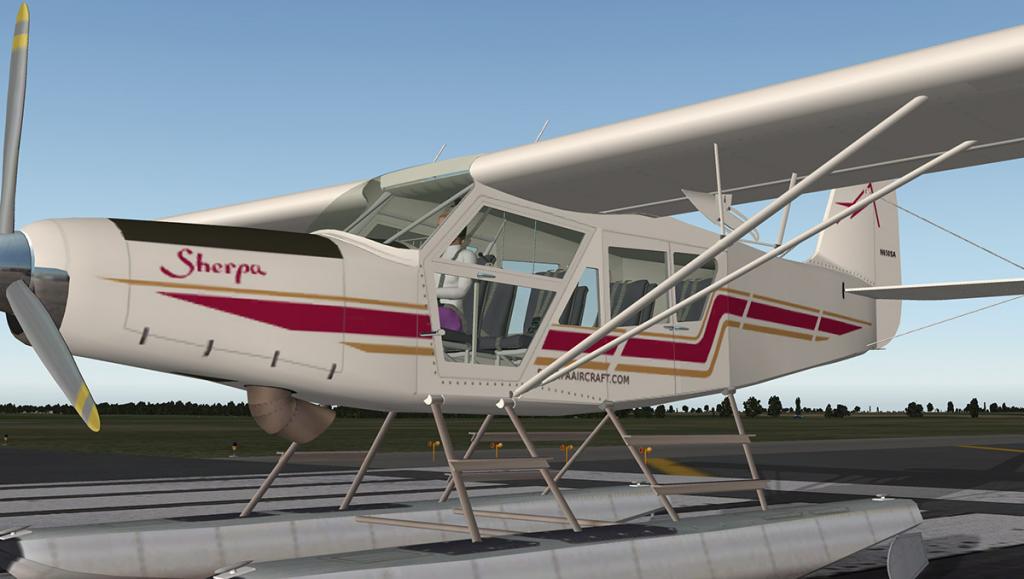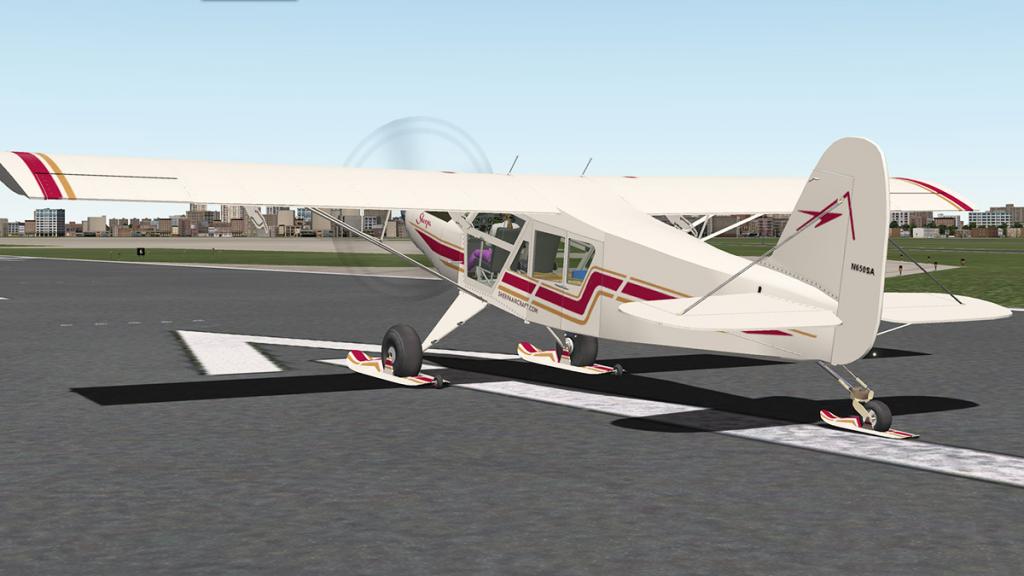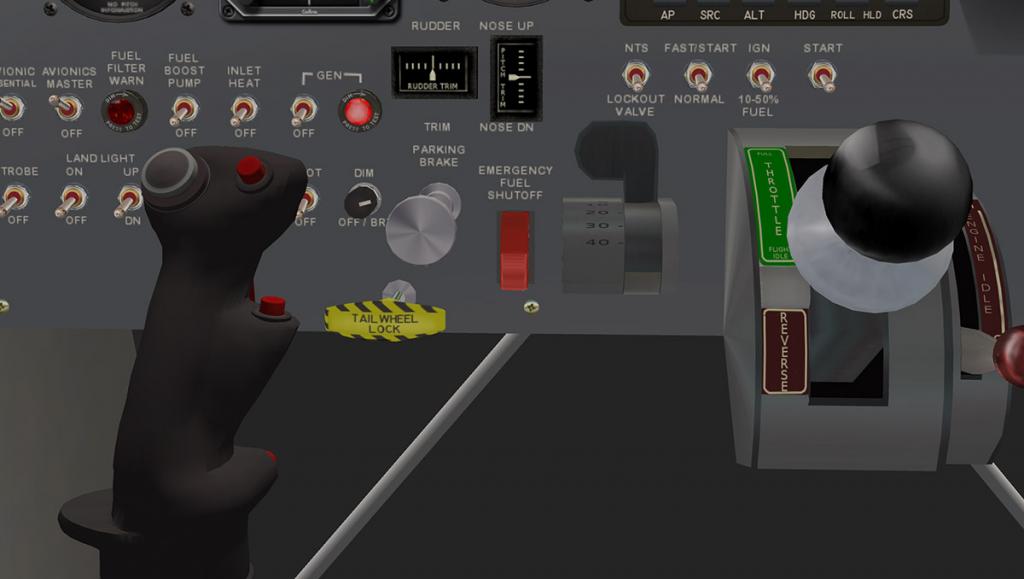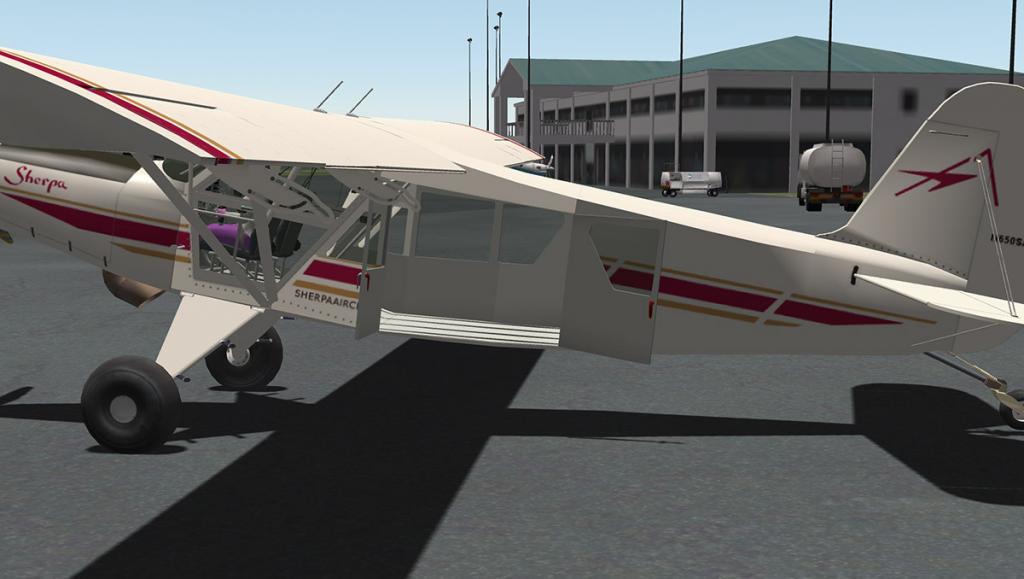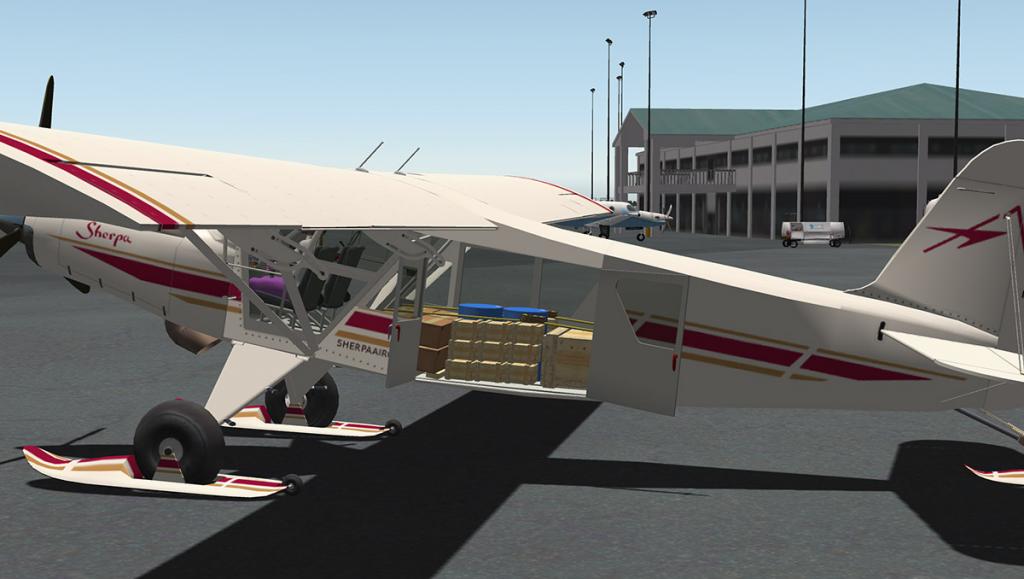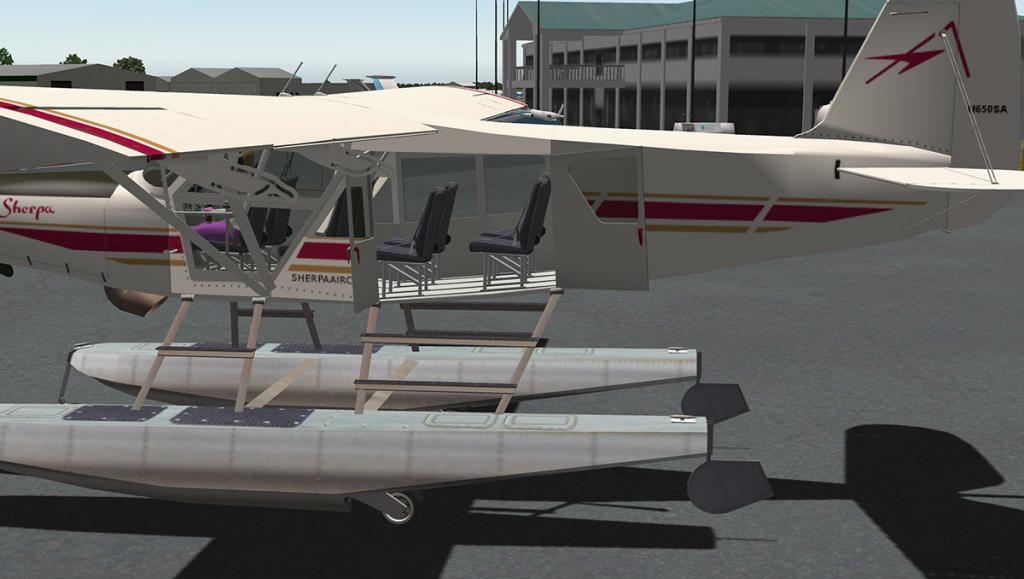Search the Community
Showing results for tags 'shade tree micro aviation'.
-
NEWS! - Aircraft Released : Sherpa K650T Turbine Bush Plane X-Plane 12 by STMA STMA - Shade Tree Micro Aviation have released the Sherpa K650T for X-Plane 12. Although based on the Sherpa X-Plane 11 version (Still available here). This new X-Plane 12 version is heavily revised, with an Improved float package, 3D instruments, Improved autopilot response with flight director steering, totally new FMOD v2 sound pack and X-Plane 12 performance tweaks and effects. The Sherpa cockpit has also been completely rebuilt to include a G530 navigator and comm package plus a Garmin GFC 700 autopilot. The aircraft specifications are interesting in being an experimental bush plane of the Sherpa design. The K650T concept includes a 1050hp Garrett turboprop engine, Wipaire 6100 amphibians, Rossi-Fernandez skis, and Alaska Bush Wheels in a configurable package. Features Short field performance – 300’ takeoff with full payload, 350’ landing with reverse prop Improved float package from the XP11 version – better stability and tracking 3D instrument package with sync and select features for airspeed, altitude, and VVI A great instrument flyer – stable and responsive Improved autopilot response with flight director steering Revised flight manual and operator manuals for systems FMOD Sound Package. Rain and reflective glass package for realistic weather in Alaska or northern Norway Along that last line – a complete anti-ice package to keep you on mission Images are courtesy of STMA STMA Developer Support : STMA Hangar and repair shop .Org The Shade Tree Micro Aviation Sherpa K650T for X-Plane 12 is now available from the X-Plane.OrgStore... ______________________ Yes! the Sherpa K650T Turbine Bush Plane XP12 by Shade Tree Micro Aviation is NOW available from the X-Plane.Org Store here : Sherpa K650T Turbine Bush Plane XP12 Price is US$29.95 Requirements : X-Plane 12 (not for XP11) Windows , Mac or Linux 8 GB+ VRAM Recommended Download Size: 175 MB Current version : 12.1 (April 9th 2024) ______________________ News by Stephen Dutton 10th April 2024 Copyright©2024: X-Plane Reviews (Disclaimer. All images and text in this review are the work and property of X-PlaneReviews, no sharing or copy of the content is allowed without consent from the author as per copyright conditions) All Rights Reserved
-
NEWS! - HpH 304 S Shark 18 Meter Sailplane released by STMA STMA? know that one, but "haven't they been quiet for quite a time?". Shade Tree Micro Aviation are what you would call "oldtimers" in the lexicon of X-Plane Folklore. In fact their own explanation by STMA staff about the origin of “Shade Tree”. Jim indicated that the name reflected “our laid-back philosophy of creating models”. Todd Denning replied: “It was because it started as an amateur effort like shade tree mechanics”. So the gang are back, but the release is a Sailplane (glider), that is another shock, mostly STMA released Bush or Utility aircraft, so again a sailplane is a little odd, but we will go with that one. The HPH 304S is a high-performance single-seated, flapped racing class sailplane. It is offered in a convertible wing configuration with long and short wingtip extensions allowing both 15- and 18-meter wingspans. X-Plane 12 does have a very different and new thermal environment. And this STMA aircraft is fine-tuned into those finer behaviors. Features Full 3D cockpit with ample room for functional growth as demand dictates. GPS equipped for cross country tasks Polar data and soaring references included for your best start in soaring experiences Flap and Airfoil data modified for best negative flap experience LX-styled Instrument package featuring both Imperial and metric data MacCready number setting on the variometer for optimum energy management Variometer and Speed to Fly modes toggle to provide airspeed guidance Vario with both color and sound indicators provide instant energy gain/loss assessment Configured correctly for both winch and aerial tow pulls Ballast control from the STMA dock feature – load it or lose it from cockpit Rain windscreen for when the clouds let go Edge of envelope flight characteristics Accurate stall speeds for all configurations 45-degree dives in full spoiler configuration without overspeed Accurate approach and landing speeds The STMA guys are back, so check out the their latest (interesting) release. Images courtesy of STMA ________________ Yes! the HpH 304 S Shark 18 Meter Sailplane by STMA is NOW available from the X-Plane.Org Store here: HpH 304 S Shark 18 Meter Sailplane Price is US$29.95 (currently on sale for US$22.95) Requirements X-Plane 12 Windows , Mac or Linux 4 GB VRAM Minimum . 8 GB+ VRAM Recommended Current version : 12 (May 26th 2023) ________________ News by Stephen Dutton 29th May 2023 Copyright©2023: X-Plane Reviews Disclaimer. All images and text in this review are the work and property of X-PlaneReviews, no sharing or copy of the content is allowed without consent from the author as per copyright conditions) All Right Reserved.
-
Classic Aircraft Review - DHC-2T Beaver Turbo by Shade Tree Micro Aviation The classic DHC-2 Beaver is seemingly everywhere, but its claim to fame is as the "workhorse of the north", Alaska north that is. But when production stopped in 1967 when the original line was shut down, there had only been 1657 aircraft built. But as the Beaver's reputation grew the de Havilland aircraft company of Canada had no choice but to put the aircraft back into production. It is one of those aircraft that should have been long out of production since its first flight August 16, 1947. But the DHC-2 solders on in not only are there hundreds still flying, but many have been totally upgraded and converted to modern powerplants from the original Pratt & Whitney R-985 Wasp Jr. radial engine, with 450 hp (336 kW) to this modified version created by Viking Air of the versatile Pratt & Whitney PT6A-27 680 hp (507 kW) turboprop engine. Viking became the exclusive manufacturer and distributor of de Havilland spare parts for the DHC-2 Beaver in 1983 when they acquired all the original jigs, drawings and Type Certificate (STC) for the aircraft from de Havilland Canada. Performance : Cruise speed (km/h) 250 - Maximum speed (km/h) 280 - Range with max payload (km) 960 - Maximum operating altitude 15,0260ft (4580m) - Rate of Climb: 1,425fpm (feet per minute) Shade Tree Micro Aviation A motley crew of six talented individuals (Jim McNeill, Kerry Cross, Bob Feaver, Mark Roberts, Todd Denning and Benjamin Whitehead) make up Shade Tree Micro Aviation (STMA) and between them they have being creating great X-Plane aircraft since the early days. Mostly STMA design mostly small rugged bush aircraft like the Beaver Turbo here, but also the original Beaver and Sherpa K650T Turbine Bush Plane (Review - Sherpa K650T) and the Pilatus PC-12/47G (Review - Pilatus PC-12/47G), good solid flyable aircraft, and this Beaver Turbo is right there in the same context and design. DHC-2T Beaver Turbo The aircraft comes in various versions and variants, in this package you have three choices for different roles. Bush Tundra The "Tundra" is the wheeled version of the aircraft. "Tundra" is a noted reference to those huge balloon tyres that are created to land on subsoil that is permafrost, or permanently frozen soil which is abundant in these northern climes. There is no standard wheeled version. Float The float variant comes with a set of Wipaire 6100 Amphib Floats, worn and extremely well done. The wheels are retractable and so are the rudders which can be lifted out of the water to lessen the drag for takeoff. Ski The Ski variant has two large plates on the front undercarriage struts and and a smaller plate on the tail wheel. They can be raised or lowered above or below the wheels. DHC-2T Beaver Turbo Exterior A bush plane is a workhorse, nothing more and nothing less, So these rugged aircraft have big job to do and their appearance can sometimes mask their abilities. STMA have done a great job in creating an authentic workhorse in design, and in someways the longer turbo nose of the aircraft is quite different from the original stubby faced Beaver that we all know and love. You are not short of options here. There is a menu panel that slips out of the lower left of your screen that covers a lot of good options when setting up the aircraft to the way you want to fly it. There is a coloured code to check what is active and what is not in Yellow just text, Red not active and Green for selected. First four options are for in the cockpit in: PFD (Primary Flight Display) Zoomed or MFD (Main Flight Display) Normal. You can also choose if to hide or show both or either of the Pilot's and co-pilot's yokes. There are five doors on the aircraft: pilot's, co-pilot's, rear passenger door left, rear passenger door right and an Alaska door or large cargo door. All can be opened and closed on the menu. And there is a large cargo pod on the bottom of the aircraft that can be installed or removed. Other menu features include wheel chocks and flags, controls (yoke) locked and aircraft tie-downs. Noted is that for the some menu items to work you have to install a plugin (HangarOps) in your Resources/Plugins folder this does include the "tiedown" feature. The "HangarOps" plugin is also required for the "Tug", a hug block like vehicle to move the aircraft around. You can control (steer) the tug either from the tab menu or the remote control inside the aircraft. It is straight forward in either: front, back or left and right, but it goes too fast in forward/reverse modes to look realistic. You can have the choice of two interiors in: "passenger interior" and "Cargo Interior", you get four seats and a cargo net with the "passenger" version and what looks like metal bars to strap cargo too in the "Cargo" version, but I think that actual cargo (boxes or crates) would have been more pleasing). The last menu item actions you can do is to lower the rear seat backs, blue colour notes down position and green notes up. The aircraft panels are engraved on the fuselage, which gives the aircraft its shape, but the rivet's are flat (painted) and not raised making the panels slightly flat in appearance, but overall the external design is good and well made, highlighted by the corrugations on the flaps and rudder. DHC-2T Beaver Turbo Internal There is another variant choice in the cockpit... You can select the "Retro" version which is based on the original Beaver panel or the... "Tundra" version which is to represent the more modern (Viking) style of a flat squared off panel. Both panels are fitted with add-on instruments and GPS navigation units, which reflects the approach that most Beavers flying around today are mostly in this guise. Personally I prefer the older "Retro" version and mostly because the black panel breaks up the bright blank facia look of the "Tundra" it looks the more interesting of the two. There is another Panel variation in the works from STMA is a GLASS feature "PILOT FLIGHT DISPLAY (PFD) AND MULTIFUNCTION DISPLAY (MFD): This variant is equipped with STMA's version of a EFIS (electronic flight information system) consisting of a PFD which is the primary flight and avionics (radios, transponder, and autopilot, etc.) display, and a MFD which has an identical set of bezel mounted controls but primarily is used to display the moving map navigation display and engine controls. This will be part of the package when released which is currently noted as "soon". So the combination of different variants you can choose to make up your ideal Turbo Beaver are quite numerous in "Retro" or "Tundra", "Tundra (Tyres)", "Floats" or "Ski" and finally "passenger" or "Cargo". All can be mixed to get the actual variant that you want. In the panel instrument layout and switch gear they are identical, so we will follow the design of the "Retro" version. The Beaver even in this guise is still a very basic aircraft, The standard six instruments (Airspeed Indicator, Attitude Indicator or Artificial Horizon, Altimeter, Turn Coordinator (old style) and Vertical Speed Indicator) are front and centre, but only on the pilot's side. Added to the standard six package is a fuel tank four set of indicators for left/right and two centre tanks and ADF pointer dial. Below is a an "Autopilot" that is easy to use, and then at the bottom of the panel a full row of switches to cover: Ing (Ignition), Fuel boost (two), Landing lights, Strobe, BCN (Beacon), Pitot (heat), NAV (Navigation Lights), INST (Instrument lights), MAP, Gen (Generator) BAT (power - battery) and Radio. A overhead light knob is on the right of the panel. On the far left is a fuel tank transfer/switch. There are a set of crude annunciators above the Standard six instruments and the flap setting position indicator noted as: Cruise, Climb, Take-off, Landing and Full-Flap. Right panel has the X-Plane large Garmin GNS 530 GPS unit (with pop-out panel), a great vintage ADF tuner and large Volts selection and fuse popper panel. The centre panel is dominated by large dials and the two main levers for Throttle and Conditioner (there is a third back-up Throttle lever), Below the levers is a twist knob for propeller feathering called here the Propeller Vernier Control. Above the levers are the two engine dials for Torque Pressure and Turbo Inlet Pressure and with a mid- screen mounted compass. Mid-Panel are two gauges for RPM and lower two gauges that cover (left) Oil Temperature Indicator and Oil Pressure Indicator (right). Lower panel is a working Hobbs Meter and Chronometer. On the roof is an outside Temperature gauge and great trim wheels, but they move quickly and with not much finesse. The rudder pedals are well done and there is the flap lever and a pump lever down on the floor by the pilot's seat, the flap lever is a pump/stroke affair to lower the flaps. Two levers on the lower part of the panel covers Shutoff (firewall) and a Cabin Heat. The park-brake is a push-pull action. Overall the instruments are large and the Standard Six are good, but instruments and mostly on the centre section don't have great resolution, this review was conducted in the texture resolution setting of "very high" and yet still some dials are still low-res and buzzy to look at. In the rear you can feel the space of the Beaver's square shape, but the textures are a bit plain and not very hard working dirty or worn. Flying the Turbo Beaver Of all the variants you can have with the STMA Turbo Beaver the one I liked the most is the Retro-Float version, especially for flying around Anchorage or the inside passage areas of lower Alaska. Here I am flying from Lake Hood, central of PANC (Anchorage International Airport) to Finger Lake which is slightly north-east of the city. I have become quite good at flipping float fitted aircraft in and out of X-Plane water, so this was a smooth transition from terra-firma to a liquid runway. On the float version there is an extra panel for the operation of the float undercarriage and to lower or lift the rudders out of the water (yes up for takeoff for less drag). One thing is noticeable is that the aircraft is very manoeuvrable on the water and far more than most float aircraft have been in the past, that makes it easier to set yourself up for takeoff even with a slight wind from the south. The turbine and power of this aircraft overcomes most of the Beaver's oldest liability... power. You very easily overcome the drag and sheer long hesitant runs to struggle to get airborne like you do in the standard radial Beaver, It just flies to state a cliche. Top speed Vne is around 139kts with floats attached and the 152knts Vne is 13kts faster than the standard Beaver in wheeled trim. But it is that torque that you have that is more usable, and the engine is more smoother and flexible. Overall you cruise at around 145kts, so no Beaver is going to break the sound barrier is it. Climb rate is better as well with only 1,000fpm maximum for the standard Beaver and 1,400ft fpm available here, so can very easily climb to 5,000 - 7,000ft and quickly, even with a full load on board. If one thing that stands out is that STMA are very good at getting the flight model and performance really good. You love to fly the aircraft because it responds very well to that stick and rudder person in you, it gives the meaning "flying by the seat of your pants" a whole new meaning, because you do love flying the Beaver... even if the aircraft's low speeds does take you some time to actually get there. I feel so comfortable with the Beaver that I can choose to land on the smaller cross section of Finger Lake, reducing the speed to around a stately 70knts with full flap and the aircraft is quite docile there in that speed range, and it is quite easy to pitch directly to the point of just popping it quietly on the water. Even a then little reverse thrust (beta) will stop you almost dead. Lower the rudders and you can easily steer to your mooring point, flexibility is one of the Beaver's strengths. Carry anything anywhere is great fun and a lot of different scenerios with this aircraft can easily be created. No doubt the power of the Turbo-Turbine version is the aircraft's advantage, you miss the noise and rattle of the radial, but this a smoother ride with more versatility, it is the way you want your Beaver that counts here, and this is the best for the longer faster routes. Liveries The "Olivia" C-GODH is the default livery with RCMP Services, A great TurboBeaver, Epoch Air, Black Beaver and white Jet Share All liveries are available with each Tundra, Ski and Float variant. Summary Shade Tree Micro Aviation have a huge reputation in X-Plane and they rarely fail to deliver interesting and highly flyable aircraft. No doubt the Turbo Beaver is in that same category, it delivers what you expect, huge features, lots of ideas and many different aircraft fit-outs and variants, so anybody who has purchased STMA before knows what they will get and they will be more than happy with the aircraft here. They will also overlook the low-resolution panel and instruments and interior design, they are not bad of course, but X-Plane is now getting down to very high-resolution in quality in this area, realism is very much in vogue and those annunciators are just really average today, and worse they are right in your sight line. These few items distract the aircraft from being very good to being really excellent as everything else is very good. Overall the Turbo Beaver is great value, a great aircraft and certainly a great addition to your "bush Pilot" experience. Fly around to your heart's content and enjoy the scenery and that is the Beaver life. __________________________________________________________________ The DHC-2T Beaver Turbo by Shade Tree Micro Aviation is available from the X-Plane.Org Store here : DHC-2T Beaver Turbo Package by Shade Tree Micro Aviation And is priced at only US$25.95 _____________________________________________________________________________________ Features: X-Plane's new GNS 530 approach-capable GPS with fully functional bezel in both the default panel mount view and when popped up (this is an intermediate size between the panel mount and the X-Plane pop-up). A Horizontal Situation Indicator (HSI) A new 2 Axis Autopilot with GPSS (GPS Steering) A full-functioning ADF, which receives all 3 HF frequency bands, and includes NDB loop homing, a feature which virtually all ADF have but is unique to our ADF in X-Plane. A fully animated 3D cockpit with manipulator controls. We strongly recommend our ChaseViewDeluxe (CVD) and TrackerXP (TXP) head tracking plugins to maximize viewing both in the cockpit and in exterior views. TXP requires only an inexpensive webcam to provide the same look-around viewing offered by other head trackers at a fraction of the cost. Shade Tree Micro Aviation's Dock which provides control over functions such as the popped up GPS, opening and closing doors, and raising and lowering passenger seat backs to increase light cargo storage. Both passenger and cargo interiors. Detachable cargo pod. Tiedown ropes. Airplane will not move with Tiedown engaged. Tiedown works on land or water. Storable remove-before-flight flags, inlet covers, pitot tube covers, and wheel chocks. Our new airport tug which uses Dock commands or our STMA Remote to maneuver the airplane into and out of our STMA Hangars or into and out of parking spots on the ramp. Installation : Download file size is 301.30mb to your X-Plane - GA Aircraft Folder. Installed file size is 389mb Notes: You have to install the "HangarOps" folder in your Resources/Plugins folder, and this operates the tie-down straps, Push-Back Truck and the Hangar door animation feature. There are also enclosed textures to create hangars to be placed in your X-Plane scenery (via the OverlayEditor) and when used with the aircraft you can open close the doors at your command. There is also a "deHavilland DHC2T Turbo Beaver X-Adventure" coming as part of the package. Documents : There are three sets of Checklists for main, Emergency and Abbreviated. Great original De Havilland performance charts and a History document of the "Beaver" and there is POH (Pilots Operational Handbook) but it is not in the "Documents" folder but in the aircraft folder under "DHC2T_Owners_Manual" Requirements : X-Plane 10.30+ - Windows , Mac or Linux - 1Gb VRAM Video card Developer Support Site : DHC-2 Turbo _____________________________________________________________________________________ Review by Stephen Dutton 30th September 2015 Copyright©2015: X-Plane Reviews Review System Specifications: Computer System: - 2.66 Ghz Intel Core i5 iMac 27”- 9 Gb 1067 Mhz DDR3 - ATI Radeon HD 6970M 2048 mb- Seagate 512gb SSD Software: - Mac OS Yosemite 10.10.1 - X-Plane 10 Global ver 10.40 Addons - Saitek x52 Pro system Joystick and Throttle : Sound - Bose Soundlink Mini : WorldTraffic Plugin Scenery or Aircraft - PANC - Anchorage International Airport by Aerosoft (X-Plane.Store) - US$29.95
-
Review : STMA - Sherpa K650T Turbine Bush Plane Shade Tree Micro Aviation specialise in these bush utility type of aircraft and their latest release is the Sherpa K650T. The Sherpa 1415B from Sherpa Aircraft first appeared in 1994 at the EAA Oshkosh event and with the high reaction to the versatile design and orders for the aircraft built by Byron Root and Glen Gordon, It was soon put into production. It was noted at the time as "A Super Cub on steriods". And the nickname remains in effect to this date. At the 2008 EAA Oshkosh flyin Sherpa Aircraft then released another more powerful version and this time it was a Turbo aircraft in the turboprop K650T. This is a eight-seat variant is powered by a Garrett 331-5 840shp turbine engine turning a 110 inch 3 bladed propeller. This is certainly powerful aircraft that is relative to its frame construction and size. And is currently undergoing the arduous phases of certification. Shade Tree Micro Aviation's Crew is made up of painters, designers, real pilots, and technical experts. including Jim McNeill (known as Papa Mac), Kerry Cross, Bob Feaver, Mark Roberts, Todd Denning and Benjamin Whitehead and the team has been around in X-Plane for quite a while, so there is a lot of expertise going into their aircraft. Shade Tree usually provide a lot of variants to their aircraft and here with the Sherpa we have three... Wheeled (Tundra Tyres) Floats Ski The aim is not only to create a versatile aircraft, but to give you also various scenarios so that you can use the aircraft to its full advantages. The Aircraft comes with a set of Xadventures or Missions that you can follow to test your skills and you have in one test 15min or 2hours to complete the mission. The river mission is a test of skill and speed, But I would recommend getting a few hours on the aircraft before setting yourself up against the clock... But fun it all is. The Xadventures are loaded into your various X-Plane folders including all the relevant scenery from a separate installer (Mac & Windows with Linux coming), and also make sure you use the I.A. aircraft settings as well. Aircraft Profile The Sherpa is pipe-frame cage design that has panels attached to the frame. And Shade Tree has done a great job in reproducing the panel on frame design. It shows the cage and all the struts that connect to the wings and to the undercarriage to great effect. The Sherpa has an interesting flap system (0º - 40º) that runs on guides and that is well represented here. You can open doors and use other effects by using a menu situated on the left lower side of your screen. Noted as "STMA "Commands", you can open and close the Pilot's and Co-Pilots Doors (or windows) but you can't open them from inside the 3d cockpit but only via the menu, Set your cargo load between 0 kg - 600 kg, Ground operations : Check Chocks and Flags, Lock controls, Tie down and Remote and tug the aircraft (with movement controls). I found of these only the control lock worked?... even using the cold start I could not get the other ground effects to work. Other menu options included : having the Auto-Pilot installed (or not), GPS Installed (or not), display Pilots Yoke, display Co-Pilots yoke, and 3d mouse view (cockpit). Which can also select a HUD type display (below) Flying The Sherpa Taking off is going to test your skills. First of all this is a tail-dragger, and at the other end of the machine you have an engine that is immensely powerful. So your work is really cut out keeping the aircraft aligned and going straight down the runway, a lot of left rudder is required to counteract all that torque but it still can crab you sideways getting up into the air. Drop the flaps 20º and you don't really have a takeoff roll but a quick bounce into the air once the tail is off the ground. Those big balloon sized (Tundra) tyres don't help either as they bounce around at any moment you get any lift. Here normal wheels would have been a nice option to get a smoother takeoff. The large Tundra's also keep rotating for a long, long period after they should quieten down as well, which is slightly visually annoying. The bonus of all this lift is that when taking off from water or ice you are quickly off the sticky stuff, so in those conditions it really excels. Ditto is with the flap arrangement. Set the flaps to 40º and you are almost trailing at only 45knts - 55 knts and so the STOL (Short TakeOff and Landing) capability is excellent on the Sherpa and it allows you if you are going into a headwind to land the aircraft like a seagull lands on a railing at the beach, you just really float and drop it down where you want it. But it does have a very nasty personality that you need to be aware of. 45 knts is fine but drop a little too far and it stalls by simply going straight nose down with the engine pulling you very quickly ground-wards, so all you suddenly feel is the engine weight pulling you straight into the ground.... nasty it is. Going up is a different matter as the power is immense, climbing is no trouble if you are lightly loaded. The aircraft is jiggy and you have to learn fly it smoothly, but it is still very touchy on the controls, my feeling is that this is a utility machine and here the basics are all you have to work with. Climbing is an art and not a precision exercise, holding the right degree angle is working the stick to find the right point, any slightly hard movements create sharp changes in the Vertical Speed dial up or down. Settling in at an altitude by using the auto-pilot will mean using the stick to steady the aircraft till it settles down at the selected altitude and that is if you don't want to find yourself climbing and falling around for about 2 min or so. otherwise the aircraft is very fast and very noisy, Sounds are good, but the noise volume does not change with you opening either the doors or the windows, and as the doors open very wide it would have made a great wind rushing noise feature. Aircraft Panel The panel is basic, but very usable. The standard six instruments are all well represented, but it is the large colour screen that dominates the panel which is the JPI EDM 930T system. It has four different screen modes. (using the ^ buttons) The first is the "Digital" screen with all your required information on (engine) Torque, Oil, Fuel, Fuel Flow, Amps (electrical) and other details, The fuel management is also noted by, Endurance, Remaining (fuel), Required and your Fuel Reserve. The second screen is an "FMS" (Flight Management System) touch input screen of where you can create routes. It is extremely well done and you can also save or load routes from your X-Plane FMS folder. Third Screen is the standard "MAP" with zoom, and the final one is for "Procedures" (or a checklist). Equipment stack is a GARMIN GMA340 Radio, GARMIN GNS430, Bendix King KX165A, Bendix King Transponder and a Bendix King 62A DME unit that gives you your speed and distance to the Navigational Aid. The Auto-Pilot is basic (and you can choose via the menu if want to use it or not), you have altitude hold, heading select, wing leveler, and course following. There is no altitude change or target altitude settings which means you have to do that manually via the stick but otherwise it is useful in helping out with the workload. The Throttle lever is big and chunky, and vibrates realistically, and the aircraft has a reverse thrust but you have go and set that to use via the keyboard or your joystick. The idle lever is off or on in power. Panel lighting is that you will find many of the instruments are lit, but a few are not. A good idea was to dim the large screen that would have been bright and overwhelming in the dark of the cabin. The outside lighting is standard but works very well in HDR mode, the wing end strobes create a great flashing effect in HDR mode or not. The main landing lights are on a separate switch to drop them down and another to switch them on. But I found nothing dropped down but the shining lights? Variants Shade Tree Micro Aviation always provide more than one version of their aircraft. The standard is the "Tundra" wheeled version that we have just explored. The two other versions are the : Float... Float detail is excellent, this version is great fun to power in and out of the water because you have all that power to propel you to a good takeoff speed and easily overcome the usual drag. As a float plane the Sherpa is very well constructed, there are wheels built into the bottom of the floats and there is also rudders that flip up out of the water. To control both of these items the Float version has two levers on the panel to do the business. The rudders have to be up to takeoff. Steering the Float version is a little difficult as you need the power or thrust to turn in any direction, and then it is a going to be in a very wide arc, strangely on land it does the same thing with the wheels? Turn off the power and you lose control even if your rudders can or could or should steer you in a certain direction? Ski... The "Ski" version is a lot of fun and a great taste of skill to land (carefully) on the side of a mountain. You have to be aware of the Tail-Ski as there is a Lock Lever situated under the panel, "Unlock" and you are in big trouble, It is not connected to the usual "Nosewheel Steer Toggle" either. You can adjust the different loads into each variant... They come set up in this configuration. Tundra is an empty space Floats has 6 Passenger Seats (Pax) Ski has Cargo "Payload" To change the load to another variant you have to go to Plane Maker and the Misc Objects panel, and find the "Pax Seating.obj'. Or the "Payload.obj" on the variant you want to change and if you press the square next to the file it will take you to the folder to select the other version or delete it all together. The Tundra is different in the fact there is no file to add or change because it is an empty space. You are required to create a new object file and insert the object (.obj) of your choice, It is easy to do and you only have to remember to add "016.00" in the very left column. One last thing you need to do is move the file upwards (one step) in that it is "Inside" the aircraft. Conclusions You are always going to get great value with any aircraft from Shade Tree Micro Aviation and the Sherpa K650T is no exception. 3 configurable variants (Tundra, Floats and Skis) An Xadventure Pack and also their STMA Hangars package that you can use in your scenery with opening hangar doors. There is a Sherpa Checklist and Operators Manual as documentation. Niggles are few but need to be noted, STMA aircraft are always very clean, for a Bush aircraft I doubt they would stay in this condition for very long. The instrument panel is the same "blank" grey with no marks or weathering, but the dials and knobs are well done. There is only one Livery, the default Sherpa livery... STMA note that when the aircraft goes into service they will reproduce more to accommodate the owners, but i feel a few more and at least one for each variant would help the cause more here. The doors open and animate but you can't do it in 3d mode inside the cabin, no hands on experience there... all round the sounds are very good, but some more noisy wind-rush from an open door or window would help up the low flying wind in your hair fun. Frame-rate is not an issue as the aircraft is very light on graphics. usually it was around the 40fr mark and rarely went below 30fr. The Sherpa is tricky to fly. as all tail-draggers are... But the aircraft is very versatile in that you can use the power and its slow speed capabilities at each end of the spectrum, and STMA aircraft are all about value, fun and skill and the high standard of the Sherpa aircraft does not in that context disappoint here at all.... Review By Stephen Dutton Price US$24.95 For X-Plane 10.22 (X-Plane 9.7 version is available on request) The STMA - Sherpa K650T Turbine Bush Plane is now available now from the X-Plane .Orgstore Developer Site: Shade Tree Micro Aviation Published 15th August 2013 Review System Specifications: Computer System: - 2.66 Ghz Intel Core i5 iMac 27” - 6 Gb 1067 Mhz DDR3 - ATI Radeon HD 4850 512mb Software: - Mac OS MountainLion 10.8.2 - X-Plane 10 Global ver 10.22 (final) - ExtremeSceneryMAXX Addons - Saitek x52 Pro system Joystick and Throttle
- 4 replies
-
- Shade Tree Micro Aviation
- X-Plane10
-
(and 1 more)
Tagged with:














